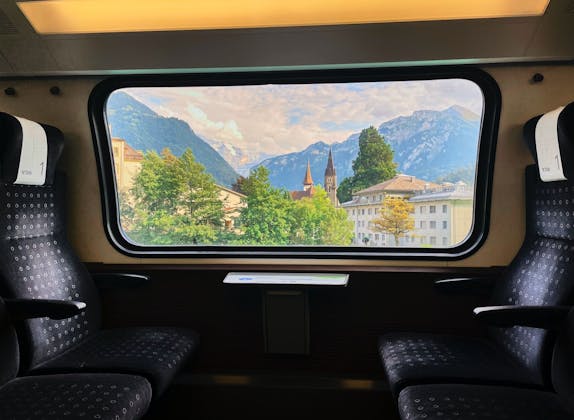
Saver Day Pass SBB - starting at 29 CHF
Validity: All day
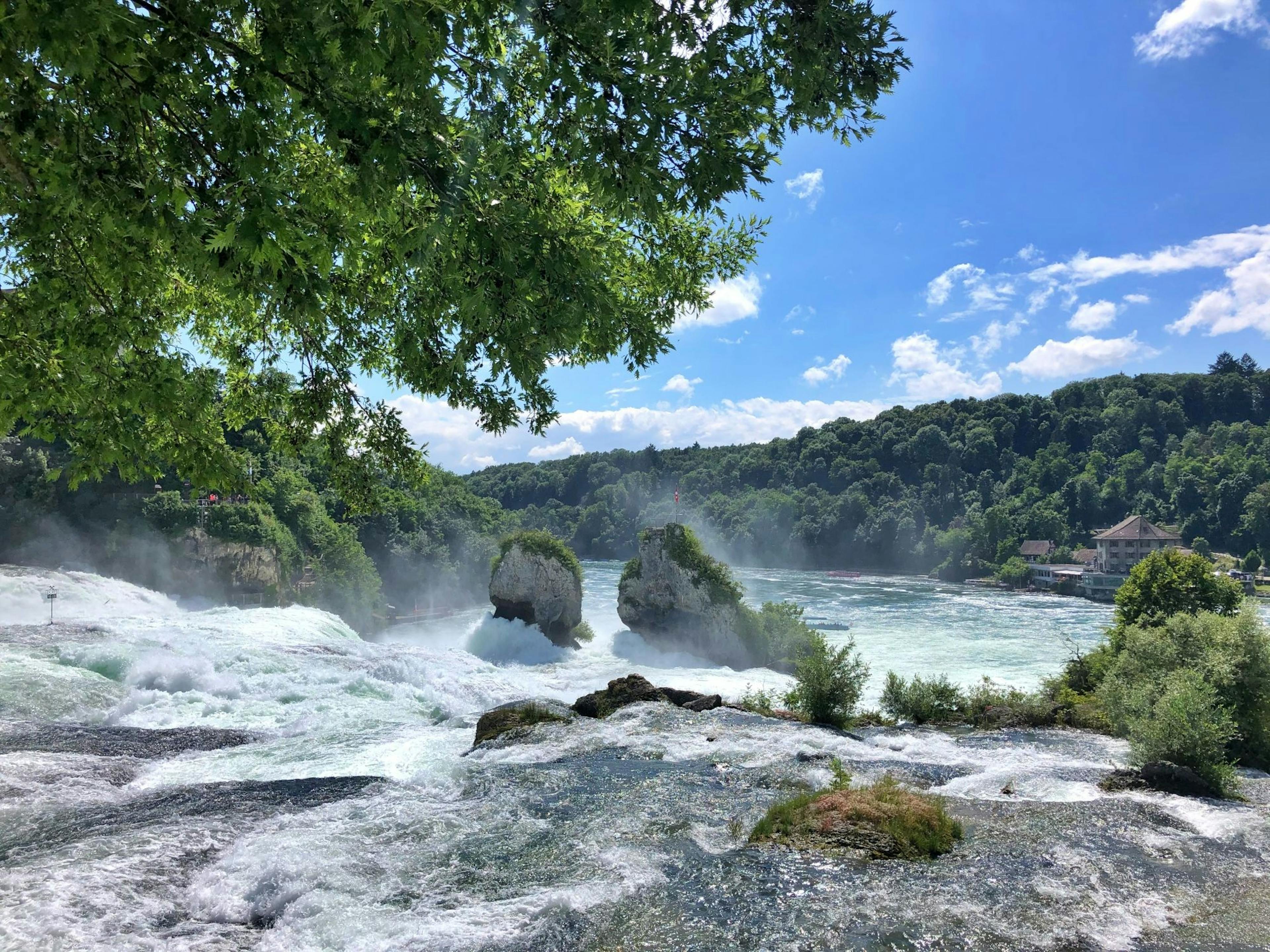
Four days in Switzerland is the perfect way to get a feel for the country. If you're looking for your perfect four-day itinerary in Switzerland, starting in Zurich, this selection of 13 itineraries will help you plan your trip. It shows you several options, all of which are doable in four days from Zurich.
Switzerland may be small, but don’t be fooled. There’s more than enough to see and do for several weeks. Of course, not everyone has that much time to travel freely for weeks on end.
If you’re spending four days in Switzerland, the following itineraries will help you plan your trip. You won’t be able to explore every corner of the country, but you’ll have plenty of opportunities to discover the beauty of Switzerland in just four days.
Our itineraries are all doable within four days and start from Zurich. However, if you’d like to begin your journey from a different location, you can easily adjust your plans. Zurich is well-connected by train from anywhere in Switzerland.
You’ll notice that we’re talking about traveling with public transport rather than by car. Most routes can be done by car if you want to rent one during your stay in Switzerland. But with our extensive network of trains and buses, driving isn’t really necessary.
And if you have more than four days to spare and see an itinerary that you like, feel free to extend it by spending an extra night in some places.
Have fun planning!
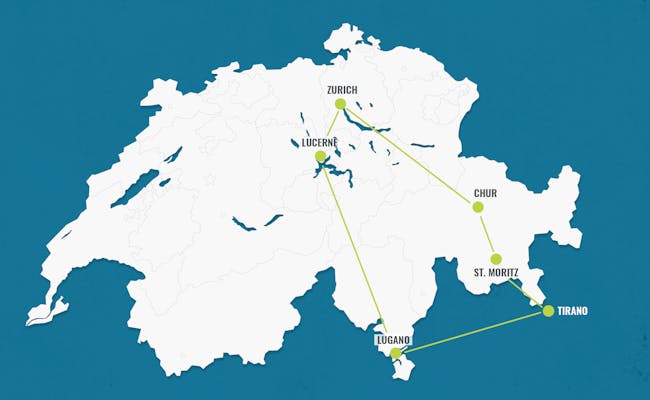
Highlights on this itinerary
Spend the morning exploring Zürich at your own pace. Rent a free bike with «Züri rollt» or join a guided city tour. Afterward, grab a takeaway lunch to enjoy on the train ride to Chur.
To get the best views of Lake Zürich and Lake Walen on your way to Chur, try to find a seat on the left side of the train.
Take an hour or two to stroll around Chur and get ready for the fresh mountain air awaiting you in St. Moritz. To reach St. Moritz, hop on the direct RhB train from Chur. Keep your camera ready, as you'll be treated to panoramic views the whole way. The Landwasser Viaduct and the winding Albulaline are two highlights along the route.
Spend the rest of the day in St. Moritz. If you feel unusually sleepy this evening, it’s due to the altitude of 1822 m above sea level. It typically takes a day or two to acclimatize to the thinner air.
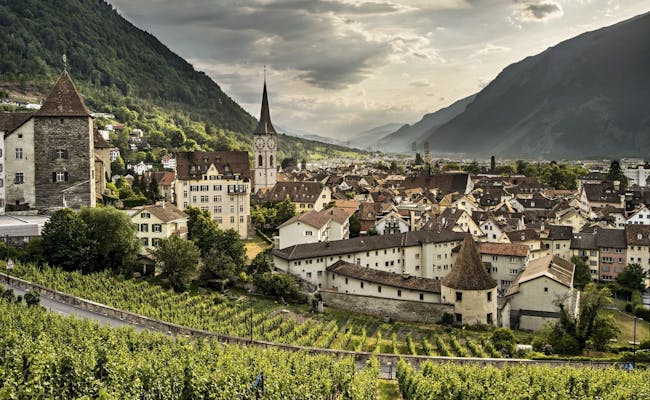
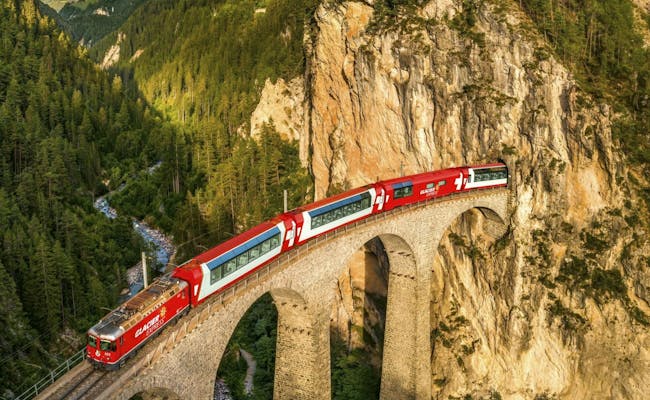
Today, you'll spend a few hours crossing the Alps from St. Moritz to Lugano. Your journey will take you up to the highest point of the Bernina Express line, past sparkling glaciers and crystal-clear mountain lakes, down into southern Switzerland, and over a spectacular viaduct before entering Italy.
And finally, back into Switzerland…
The first leg of this train journey takes you to Ospizio Bernina, the highest point of today’s trip. This small station is not far from St. Moritz and sits at 2,253 m above sea level. From here, it's all downhill. Of course, metaphorically speaking. On your way down to Italy, you'll cross the spiral viaduct in Brusio, where the train makes a full 360-degree turn to conquer the height.
By this point, you've already descended quite a bit, and the outside temperature is much warmer than just a few hours ago. The last part of the trip begins in Tirano, right at the Swiss-Italian border. From Tirano, the Bernina Express bus takes you through the stunning wine region of Valtellina.
Before you return to Switzerland, you'll pass by Lake Como, the place where George Clooney and many other celebrities have tied the knot.
After this long day, you can stretch your legs along the promenade of Lake Lugano. Enjoy the view, treat yourself to some ice cream, and stroll through Lugano.
You’ve earned it.
Since you’ll be spending the next two nights in the canton of Ticino, you’re entitled to the fantastic Ticino Ticket. You’ll receive it when you check into your accommodation.
This handy guest card allows you to use public transport throughout Ticino for free. Additionally, it gives you discounts on various attractions and activities.
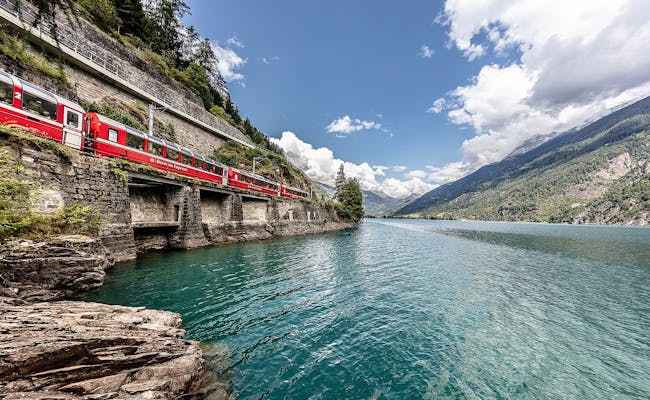
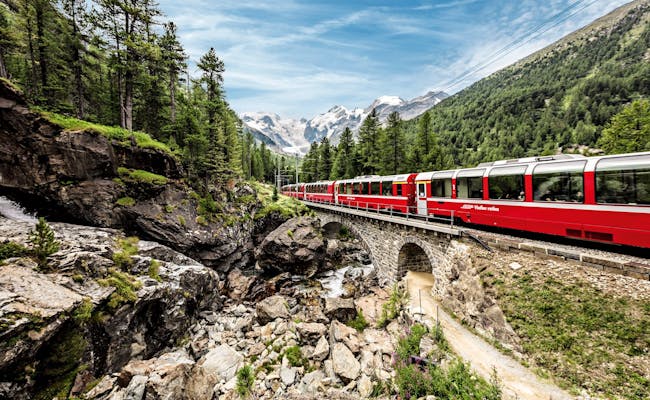
Get ready to explore the Italian part of Switzerland in all its glory. With so many activities to choose from, you won't be bored today.
First, we recommend heading to one of the two river valleys: Maggia or Verzasca. Both valleys are excellent for hiking, spending time by the river, or taking a refreshing dip. Don’t forget to pack your picnic! There are countless spots to take a break in both valleys. Our favorite place is right under the famous stone bridge in Lavertezzo.
If you prefer calmer waters over cold mountain streams, you should visit Lake Maggiore or Lake Lugano. Both lakes are breathtaking and offer more photo opportunities than you can imagine.
Other popular destinations in Ticino include the inspiring artsy town of Ascona near Locarno and the city of Lugano further south.
If you want to brush up on your knowledge of Swiss geography, check out Swissminiatur in Melide just outside Lugano. It’s a miniature version of Switzerland, showcasing incredible attention to detail.
If you're an adrenaline junkie, there's the 007 Bungy at the end of the Verzasca Valley. You may have seen this 220-meter jump in the James Bond film GoldenEye. If you decide to take the plunge from the dam, be sure to share your photo with us. We’d love to see it... 🙂
At the end of the day, head back to Lugano and enjoy the remaining time in this charming city.

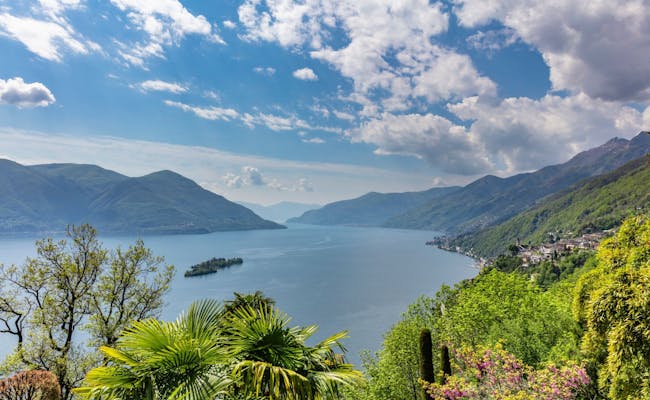
If you're visiting Switzerland between April and October, you're in luck. As long as you don’t leave Ticino on a Monday, you can travel back over the Alps on the Gotthard Panorama Express.
On the first leg of this journey, a panoramic train takes you through the old Gotthard Tunnel to Flüelen. Before the Gotthard Base Tunnel opened in 2016, this was the only way to reach Ticino by train.
Now, since the opening of the longest tunnel in the world, the old tunnel is only used for tourism purposes.
In Flüelen, you’ll enjoy a three-hour ride on a steamship across Lake Lucerne. You arrive in Lucerne around 3:00 PM, right next to the train station. This gives you enough time to either explore Lucerne or head straight back to Zurich.
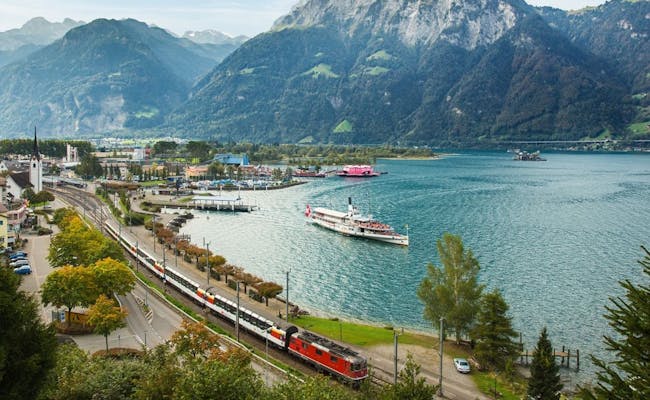

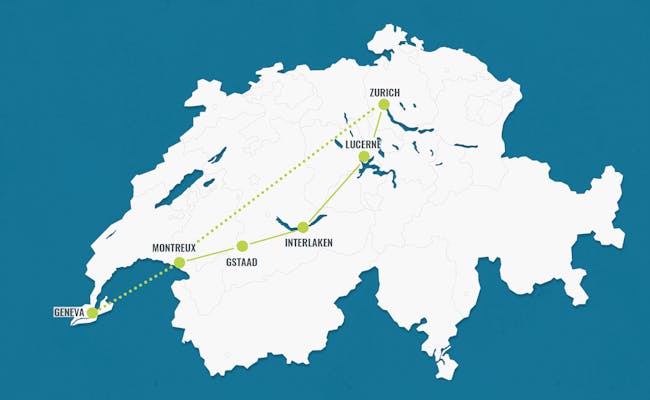
Highlights on this itinerary
Leave Zurich early in the morning, head to Lucerne, and spend a few hours exploring the city. Stroll across the Chapel Bridge, wander through the old town, relax by the lake, or visit the Glacier Garden. Continue to Interlaken around lunchtime.
The Golden Pass Line is a popular scenic route from Lucerne to Montreux, operated by several train companies. It connects the heart of Switzerland with the shores of Lake Geneva.
This panoramic route passes eight lakes, travels through six different cantons, crosses three mountain passes, and connects two language regions. Today's segment between Lucerne and Interlaken is operated by the Zentralbahn and takes just under two hours.
Upon arriving in Interlaken, you’ll spend the evening in this bustling and very touristy town. The activities here are endless, and if you want to fully enjoy this region, two nights won't be enough. However, you'll have the whole day tomorrow to explore Interlaken, so get ready for a fantastic day.
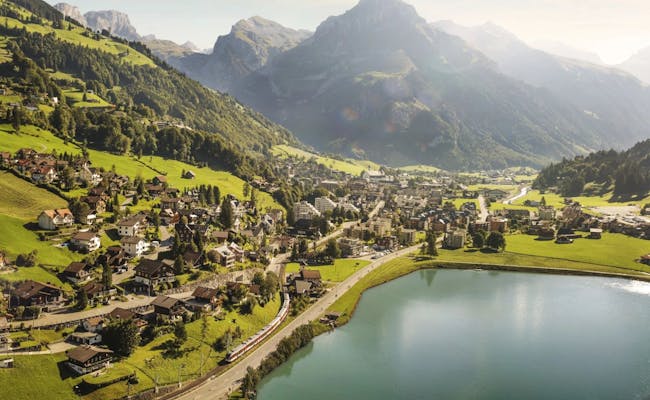
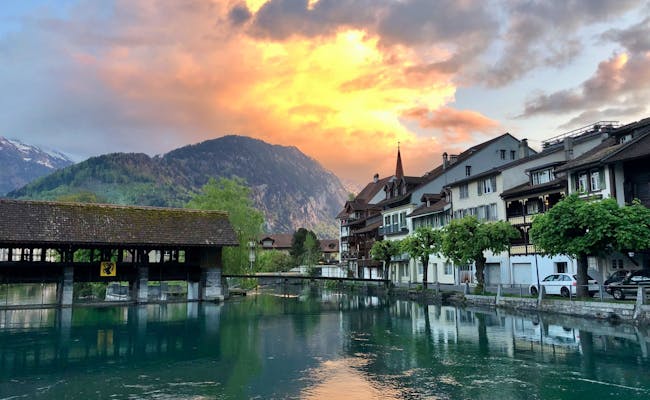
You have more activities to choose from today than you can imagine. It all depends on your budget, but in an adrenaline-fueled place like Interlaken, the sky's the limit.
If at all!
Skydiving, paragliding, canyoning, and jet boating are all popular activities that will get your adrenaline pumping.
A more relaxing option is a ride on a passenger ship on Lake Thun or Lake Brienz. On both lakes, you'll be treated to incredible views, making you wish you’d never have to leave. If you want to make a stop during your boat trip, you can get off in Giessbach (Lake Brienz), at the St. Beatus Caves, or in Spiez (Lake Thun).
The Jungfrau region around Interlaken is also a fantastic place for hikers. The number of hiking trails is nearly endless. Regardless of your fitness level and ambitions, you’ll find something that suits your taste here.
Of course, the famous Jungfraujoch - also known as the Top of Europe - is the number one destination everyone wants to see. With the Jungfrau Railway, you’ll ascend to Europe’s highest railway station and find yourself amid impressive mountain and glacier landscapes.
If you're looking for a more budget-friendly alternative to the Jungfraujoch, we recommend visiting Schilthorn, Schynige Platte, Grindelwald First, or Männlichen instead. The rides to these peaks and the views from the summit won't disappoint you.
Other attractions in and around Interlaken include: Ballenberg Open-Air Museum, the chocolate workshop at Funky Chocolate Club, the two mountain lakes Blausee or Oeschinensee, and the Aare Gorge. And not to forget the charming towns and villages like Brienz, Spiez, Thun, Lauterbrunnen, or Grindelwald.
We could go on forever here. But you’d probably just get annoyed that you’re not spending the whole week here.

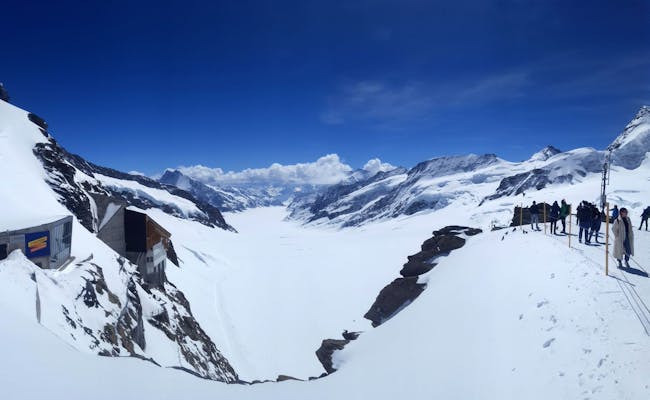
Today, you're in for another scenic treat. As soon as you leave Interlaken heading towards Zweisimmen, you'll have Lake Thun on your right. For the best view of the lake, we recommend snagging a seat on the right side of the train.
After a little more than an hour’s journey, you'll need to transfer to another train in Zweisimmen. This is where the ascent through the Bernese Oberland to Gstaad begins. This area is a true dream for mountain lovers and encapsulates pretty much everything that makes Switzerland special. You'll find lakes, mountains, lush meadows with grazing cows, glaciers, plenty of hiking trails, stunning landscapes, and charming little villages in abundance here.
In Gstaad, you have several options for spending your afternoon. Since this area is a hiker's paradise, you’ll have plenty to choose from. One possible hike takes you to Lake Lauenensee, a mountain lake surrounded by moorland.
A great excursion from Gstaad is a visit to the impressive Glacier 3000. After a 35-minute bus ride to Col du Pillon, you’ll arrive at the valley station of the cable car. Hop into the gondola and enjoy the ride. Once you reach the top, a breathtaking 360° view of the Alps awaits you.
On a clear day, you can see some of the most famous mountain giants of the Alps, like the Matterhorn, Mont Blanc, and the well-known trio of Eiger, Mönch, and Jungfrau. If you’re feeling adventurous, you should definitely try the Peak Walk to Scex Rouge. It’s the world's first suspension bridge connecting two peaks. At Glacier 3000, there are also other activities like the toboggan run or a hike across the glacier.
If you take a stroll through Gstaad in the evening, keep your eyes peeled for celebrities. This place often attracts famous faces, just like St. Moritz.


It’s already time to say goodbye to this beautiful region. After breakfast, hop on the Golden Pass train and continue your scenic journey. Once you leave the Bernese Oberland and drive down the hills, you'll arrive in the French-speaking part of Switzerland.
The Golden Pass Line ends in Montreux, where you’ll spend the afternoon. Enjoy a few hours in this stunning area by Lake Geneva before heading to Bern.
Make your way to the promenade and check out the Freddie Mercury statue in front of the market hall. If you want to visit the famous Château de Chillon, you can either follow the promenade all the way to the castle or hop on a bus. Passenger boats also run regularly between Montreux and Château de Chillon.
Alternatively, you can head the other way to the Lavaux vineyards. Just a short train ride west of Montreux, you'll find the famous Lavaux vineyards, which are a UNESCO World Heritage site. To enjoy the beautiful views, get off at Cully or Epesses and follow the marked hiking path through the vines.
When you’re ready to continue your journey, make your way to Zürich or Genf, depending on which city you’re leaving Switzerland from.
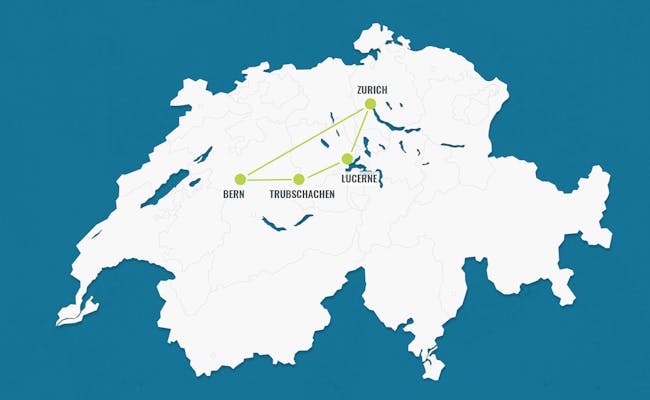
Highlights on this itinerary
Start your day in Zurich and hop on a train to Lucerne. Stow your luggage at the station or your accommodation, then catch the next train to Arth Goldau. From there, the Rigi railway - the first mountain railway in Europe - will take you on a 45-minute ride to Rigi Kulm station.
If the Rigi isn’t shrouded in clouds, you’ll enjoy stunning views of the Alps, Lake Lucerne, and other nearby lakes. Just follow the signs to the viewpoint once you’ve gotten off at Rigi Kulm.
After you’ve snapped enough photos, you can take a break in the restaurant, ride the train down to Vitznau, or go for a hike. With over 120 kilometers of hiking trails, you have plenty of options.
When you arrive in Vitznau, the passenger ship to Lucerne will be waiting for you. Keep your camera ready, as the boat ride is incredibly scenic and offers even more breathtaking views.
Back in Lucerne, you can spend the rest of the evening exploring the city or find a cozy spot by the lake to unwind.
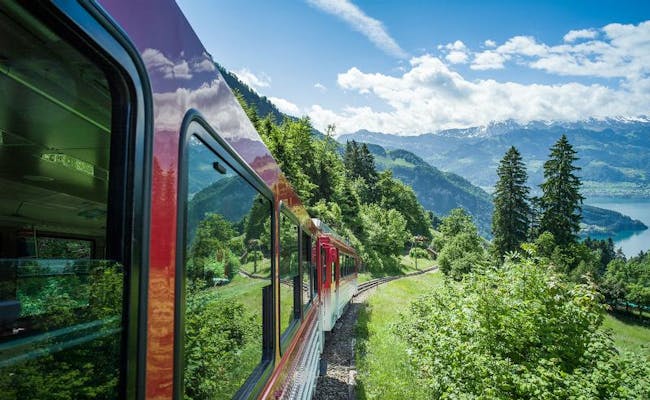

Lucerne has so much to offer. One of the most exciting excursions is the ride on the steepest cogwheel railway in the world up to Pilatus, the local mountain of Lucerne. This train operates only in the summer from Alpnachstad, while the cable car from Kriens takes you to Pilatus year-round.
Speaking of mountains: Titlis is another landmark in the region worth visiting. You can reach the summit from Engelberg with two gondolas, one of which is the world's first rotating cable car. You'll be treated to an impressive 360-degree view.
For an easy hike that includes a ride on a 152.8 m high, rocket-like lift, you can take a boat or bus to Kehrsiten-Bürgenstock.
Don't forget about Stanserhorn, a mountain near Lucerne serviced by a modern double-decker cable car. It's best to take the boat to Stansstad. Here, you transfer to the cog railway for the first leg and then take the open-air gondola for the last stretch to Stanserhorn.
Theoretically, you could also head to Interlaken on this free day. Leave Lucerne in the morning with the Golden Pass Line, spend the day exploring the picturesque region around Interlaken, and return to Lucerne in the evening.
Another great way to spend the day around Lucerne is a trip on Lake Lucerne. Several steam and passenger boats operate on the lake, offering scenic excursions.
As you can see, Lucerne has a lot to offer on a sunny day. But in reality, the weather isn't always that promising. In that case, we've got some cool indoor options for you.
For one, there's Aeschbach's Chocoworld in Root. It takes about 30 minutes by bus to get there. Nothing brightens up a rainy day like delicious chocolate, right?
In Hergiswil, not far from Lucerne, you'll find what the Swiss lovingly call the "Glasi". The glassworks in Hergiswil takes you through the glass-making process, lets you watch the pros at work, and even gives you a chance to try your hand at glassblowing. When was the last time you made your own glass?
Another bad weather option is the Swiss Museum of Transport in Lucerne. As the name suggests, this museum revolves around transportation. Everything from bicycles to astronautics is covered.
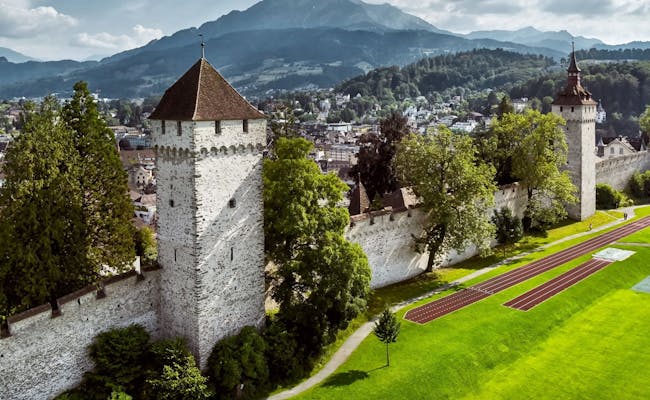
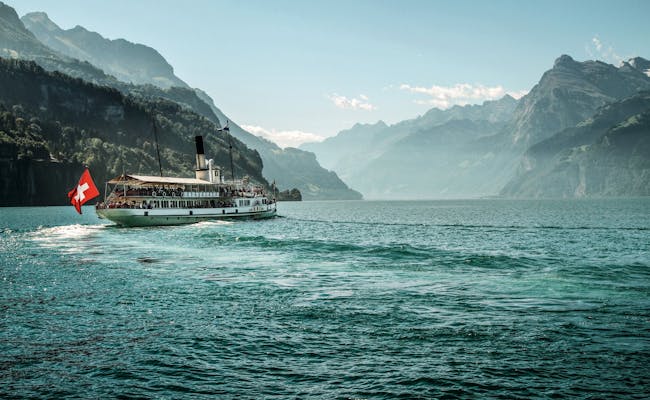
Luckily, you don’t have to leave Lucerne until lunchtime today. So spend the morning doing whatever you didn’t get to do yesterday. Whatever you do, make sure you work up an appetite and don’t grab too big a lunch for your ride to Trubschachen. You’ll need every free inch in your stomach for the biscuit-feast awaiting you.
Once you’re ready to move on, catch the train to Trubschachen. But watch out. This train gets split up along the way and only the front part travels through the picturesque Entlebuch region to the Kambly factory. When you’re at the platform in Lucerne, please check the display to make sure you get on the right half of the train.
The Kambly factory store right next to Trubschachen station is free to visit. In here, you can spend as much time as you like tasting up to 100 types of delicious biscuits. Unfortunately, you can’t visit the factory and watch the production of this iconic Swiss biscuit. However, they do have a cinema at the shop where they give you some more insight into this traditional family business.
After reaching the point of explosion, or maybe two biscuits before, move on to Bern. To digest your Kambly overdose, go for a walk in Switzerland’s capital city. For an impressive night view over Bern, we recommend heading up to Rosengarten.
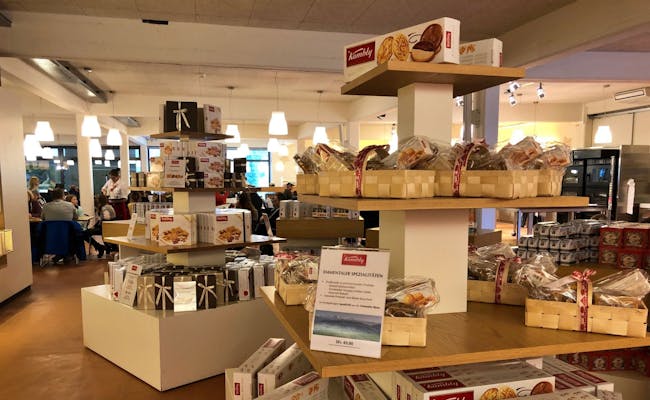
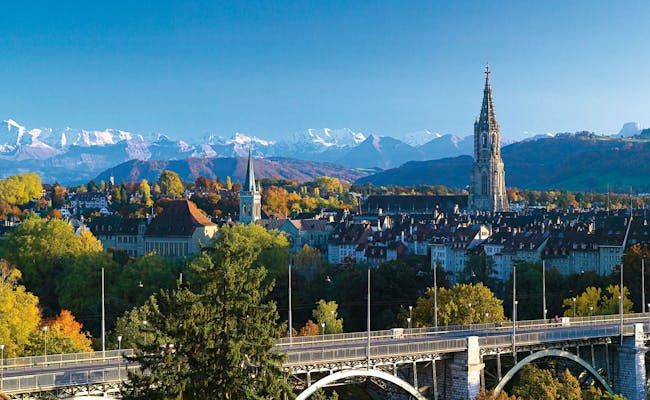
Today, you can choose from a wide range of activities. Join a city tour or explore Bern at your own pace. Stroll through the old town, visit the Bear Park, check out the Federal Palace, and take a walk back to the Rose Garden to enjoy the view.
You can also head to the Gurten - Bern's local mountain - to watch the animals at the Dählhölzli Zoo or visit the Botanical Garden. Take the lift at the train station and enjoy the view from the Great Schanze, or go for a swim in the Aare or at Weyermannshaus.
Oh, what a tough choice...
At the end of the day, you’ll take the train back to Zürich and spend the rest of the day exploring the largest city in Switzerland.
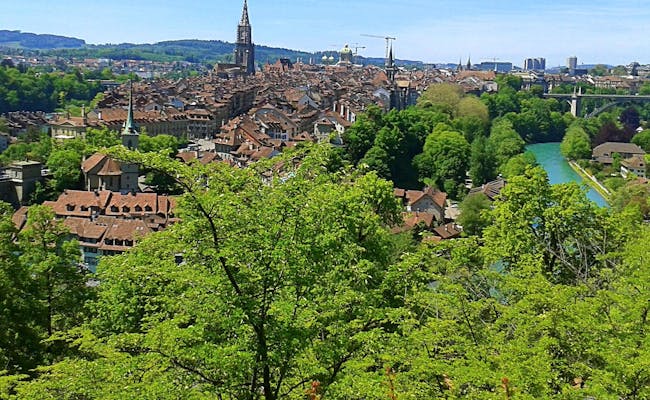
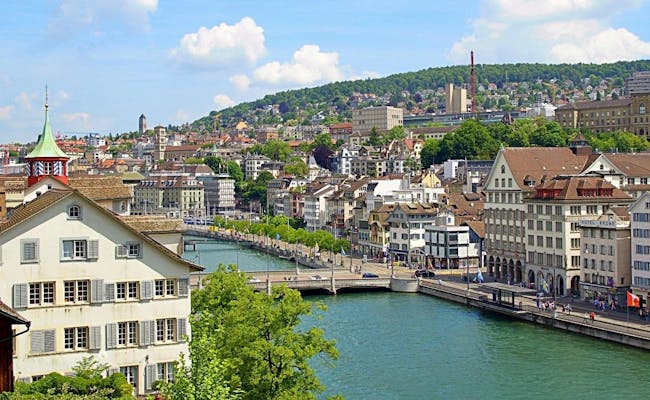
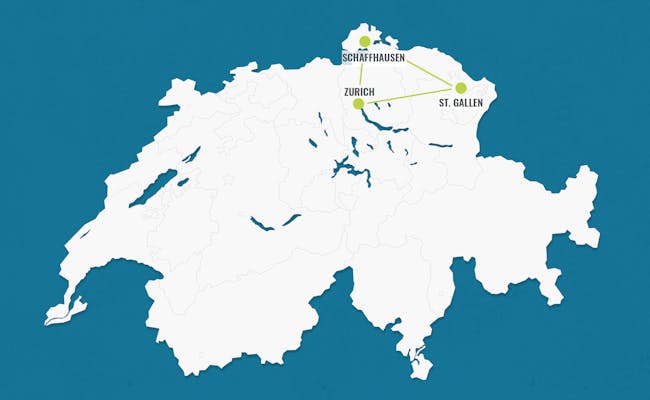
Highlights on this itinerary
Explore Zürich in the morning on your own, rent a free bike with “Züri rollt” or join a city tour. After the tour, grab a take-away lunch and take the train to St. Gallen.
Spend the afternoon wandering around the old town of St. Gallen. With its UNESCO-protected Abbey District, the impressive cathedral, and the stunning Abbey Library, this city has a lot to offer.
Don’t miss the recreational area “Drei Weieren.” You can reach it either by taking the Mühleggbahn or by walking up one of the many stairs. Alternatively, you can visit the Peter & Paul Wildlife Park or quench your cultural thirst in one of the many museums.
The best place to relax is definitely at the “Drei Weieren.” Here you can go swimming or take a walk through the woods. Plus, you’ll have a fantastic view over the entire city, Lake Constance, and even into Germany.
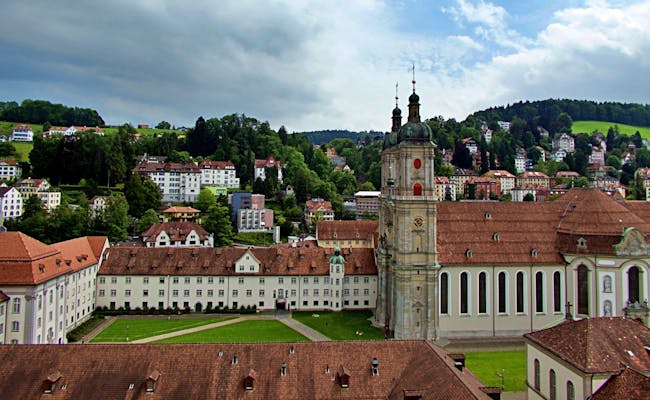
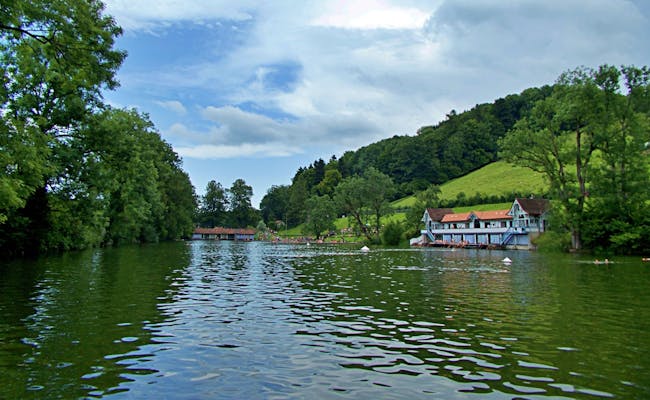
Today, you’re in for some serious hiking and a ton of impressive mountain views. In the morning, catch the train to Wasserauen and hike up to Seealpsee, one of the three lakes in the Alpstein mountain range. Spend some time in this peaceful spot before moving on to Ebenalp.
On your way to Ebenalp, you’ll pass by a place you might have seen before. The famous Äscher restaurant. Ever since it was featured on National Geographic and on Ashton Kutcher’s Instagram, it‘s been completely overrun by its success. This sadly caused it to lose some of its former charm. However, it’s still a worthwhile place to snap a few photos and take a break.
At Ebenalp, you can choose between hiking back to Wasserauen or catching the cable car. If you still have it in you after this long day, you might like a quick stopover in Appenzell on your way to St. Gallen.
In case you hop off in Appenzell and are feeling brave, visit the little cheese store at Hauptgasse 13. But be warned, those smelly cheese fumes will knock your socks off the second you enter the store. There’s no way your feet will be able to compete with that odour. Not even after a full day of being trapped inside your trekking boots... 🙂
Oh, and don’t miss out on a piece of Appenzeller Biber, an iconic local sweet treat made of gingerbread and a honey almond filling. And before you ask: Nope. This Biber doesn’t have any famous Canadian relatives...
Also, if you’re a beer-lover, make sure to stop by the Locher brewery. They brew the popular Quöllfrisch beer that is consumed all across Switzerland.
In the evening, head back to St. Gallen and enjoy sleeping like a baby tonight. Fresh mountain air has a tendency to leave you peacefully exhausted.
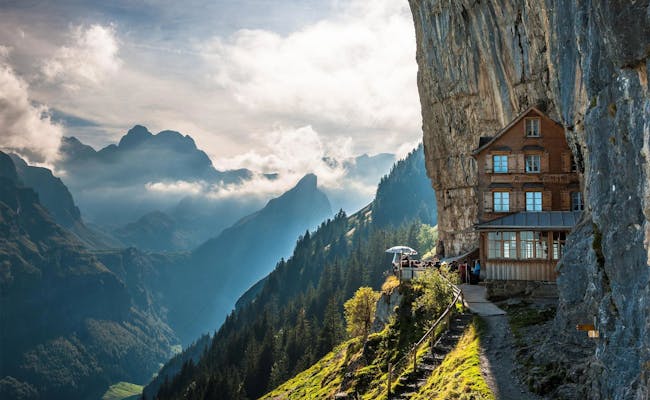
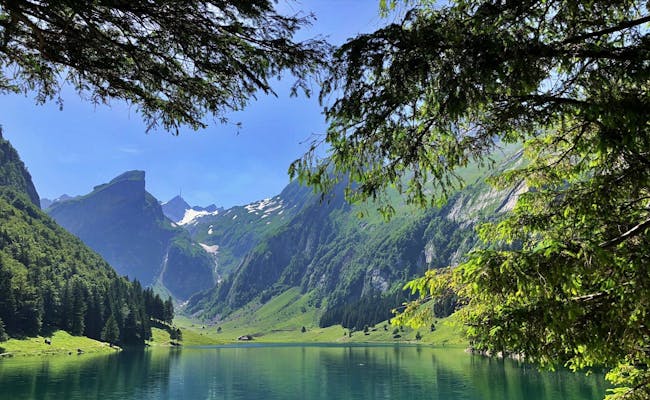
After breakfast, spend some more time in St. Gallen or head to the shores of Lake Constance. Rorschach, Romanshorn and even Constance in Germany are all accessible within 25 to 35 minutes by train.
Back in St. Gallen, grab some take-away lunch and head to Neuhausen to visit Europe’s largest waterfalls. The mighty Rhine Falls attract visitors from all over the world and are one impressive force of nature.
Access to the falls is free from the northern shore, while seeing them from Laufen Castle in the south costs 5 CHF. Spend however long you like getting soaked in the mist of the Rhine Falls before moving on to Schaffhausen.
Schaffhausen has a charming old town with an impressive total of 171 bay windows, which is more than any other Swiss city can account for. Once you’re done chasing them all down and exploring the rest of Schaffhausen, head up to Munot and enjoy the view over the city.
After breakfast and maybe spending some more time strolling through Schaffhausen, hop on the train and visit the picture-perfect old town of Stein am Rhein. This little town is where Lake Constance ends and the River Rhine begins.
Small yet incredibly charming, Stein am Rhein is the ideal place to spend some time admiring those beautifully painted houses. Once you’ve seen enough, embark on a journey up the River Rhine and back to Schaffhausen.
This boat trip takes roughly two hours and is said to be one of the prettiest in Switzerland. Once you arrive in Schaffhausen, grab your luggage and head back to Zurich.

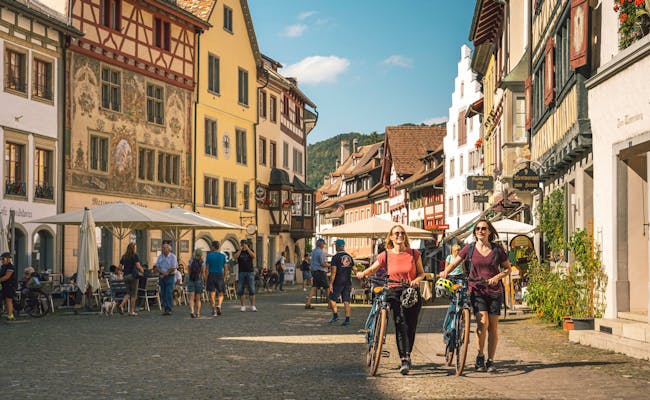

Highlights on this itinerary
Explore Zürich on your own in the morning, rent a free bike with "Züri rollt", or join a city tour. After the tour, grab a take-away lunch and take the train to Bellinzona.
Thanks to the 57 km Gotthard Base Tunnel, you can now zip through the Alps and reach the warm southern part of Switzerland in less than two hours.
Make a stop in Bellinzona and visit the Castello di Montebello, a UNESCO World Heritage site, before continuing on to Locarno.
Spend the rest of the evening soaking in the Italian vibe in Locarno. Hang out at the Piazza Grande, stroll along Lake Maggiore, or treat yourself to some ice cream by the lake. And just in case you’re wondering: yes, you’re still in Switzerland, even though it feels more like Italy.
Since you'll be spending the next two nights in the canton of Ticino, you’re entitled to the fantastic Ticino Ticket. You’ll receive it when you check in at your accommodation.
This handy guest card allows you to use public transportation across Ticino for free. Plus, it gives you many discounts on other attractions and activities.


Get ready to explore the Italian part of Switzerland in all its glory. With a variety of activities to choose from, you won’t be bored today.
First off, we recommend heading to one of the two river valleys: Maggia or Verzasca. Both are perfect for hiking, spending time by the river, or taking a refreshing dip. Don’t forget to pack your picnic! There are countless spots to take a break in both valleys. Our favorite place is right under the famous stone bridge in Lavertezzo.
If you prefer calmer waters over cold mountain streams, consider heading to Lake Maggiore or Lake Lugano. Both lakes are breathtaking and offer more photo opportunities than you can imagine.
Other popular destinations in Ticino include the inspiring art town of Ascona near Locarno and the city of Lugano further south.
If you want to brush up on your knowledge of Swiss geography, check out Swissminiatur in Melide, just outside of Lugano. It's a miniature version of Switzerland and showcases incredible attention to detail.
If you’re an adrenaline junkie, you can find the 007 Bungy at the end of the Verzasca Valley. You might have seen this 220-meter jump in the James Bond film Golden Eye. If you decide to take the plunge from the dam, be sure to share your photo with us. We’d love to see it… 🙂
At the end of the day, head back to Locarno and spend the remaining time in this charming town.
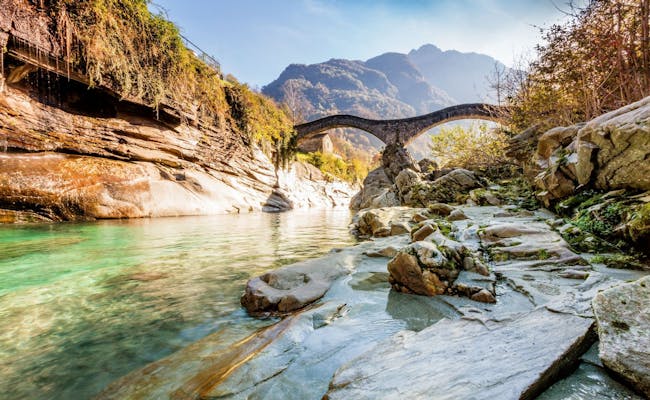
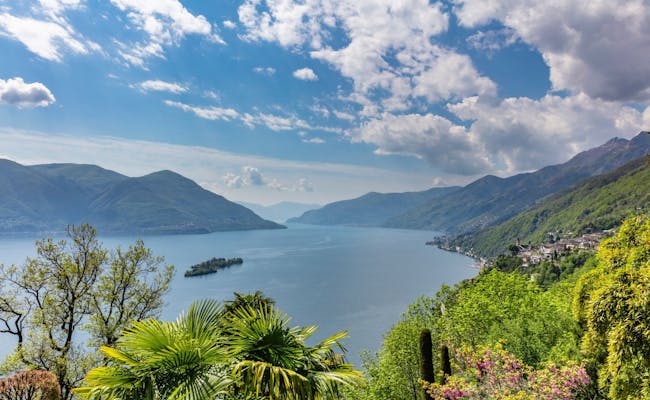
You’re probably going to laugh now. But the station your train to Domodossola leaves from is called Locarno FART. Unfortunate name, we know. It’s short for Ferrovie Autolinee Regionali Ticinesi and translates to “regional railway of Ticino”.
The ride to Domodossola lasts just under two hours. It might be the slowest train you’ve ever been on but chances are you won’t even notice time passing by.
The landscape is beyond stunning from start to finish. As you travel through the impressive Centovalli region – which stands for one hundred valleys – you’ll pass several charming villages with old stone houses, ride across tall viaducts and even catch a glimpse of a waterfall or two.
Enjoy the views because from Domodossola to Brig, you’ll be spending most of the time in a tunnel. That’s ok though because the ride from Brig to Zermatt is part of the Glacier Express – another scenic train ride.
Once you arrive in Zermatt, spend the rest of the day strolling through this little town and enjoy the sight of the mighty Matterhorn. Provided it’s not veiled in clouds.
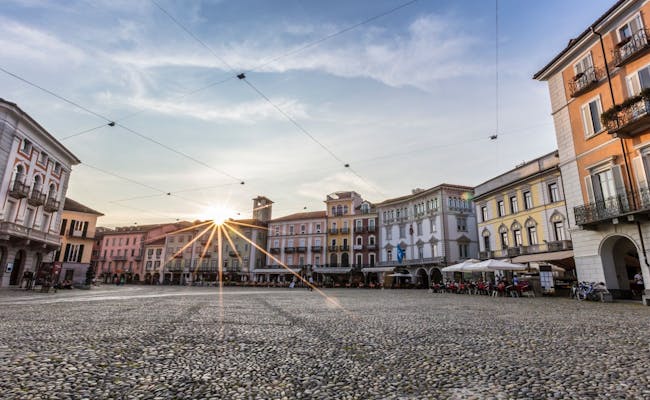
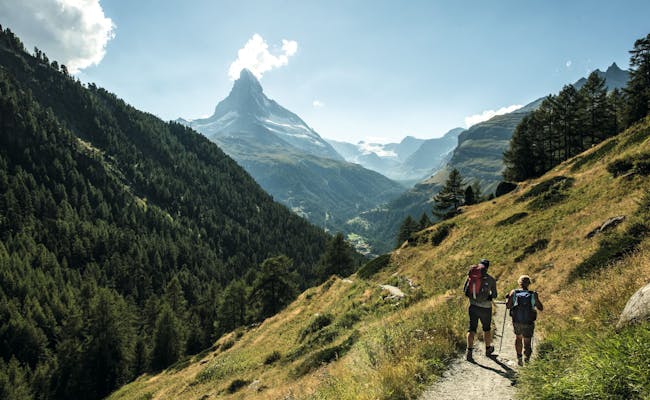
In Zermatt stehen die Berge und die Natur im Fokus. Wenn du wegen der atemberaubenden Aussicht auf die Berge in die Schweiz gekommen bist, wirst du dich hier pudelwohl fühlen.
Es gibt unzählige Wanderungen und Spaziergänge in verschiedenen Schwierigkeitsgraden, die dich an Orte bringen, die du dir nie hättest vorstellen können. Ein Beispiel ist der beliebte Zermatter 5-Seenweg, den du in etwa 2,5 Stunden bewältigen kannst. Er führt an fünf glasklaren Bergseen vorbei und bietet immer wieder beeindruckende Ausblicke auf das Matterhorn.
Ein weiteres Abenteuer, das dir vielleicht etwas schwindelig werden lässt, ist der Überquerung der längsten Fussgänger-Hängebrücke der Welt in Randa. Sie ist ganze 494 m lang und spannt sich über das Tal. Der Rundweg zur Brücke beginnt und endet in Randa, nur 15 Minuten mit dem Zug von Zermatt entfernt.
Wenn du die Wanderung lieber auslassen und die Berge auf entspannte Weise genießen möchtest, empfehlen wir dir, mit der Bahn auf den Gornergrat zu fahren. Nach einer unglaublich steilen Zugfahrt findest du dich in einer Höhe von 3089 m ü.M. direkt vor dem Gornergletscher und dem Matterhorn wieder. Sei nicht überrascht, wenn dir beim Erklimmen der Treppe zum Aussichtspunkt die Puste ausgeht. Das liegt nicht an dir, sondern an der dünnen Luft.
Wenn du genug Fotos vom Matterhorn gemacht hast, verlasse Zermatt und nimm den Zug zurück nach Zürich.
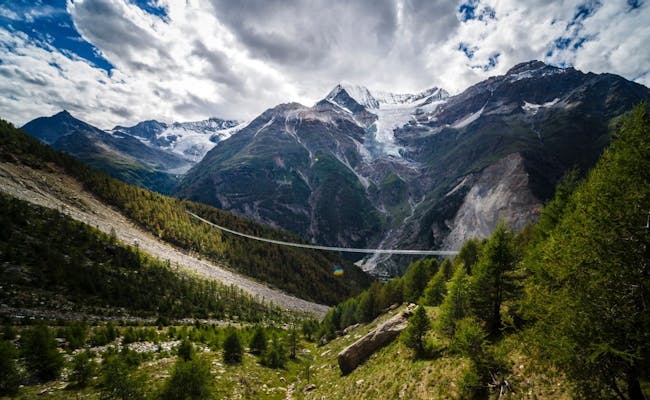
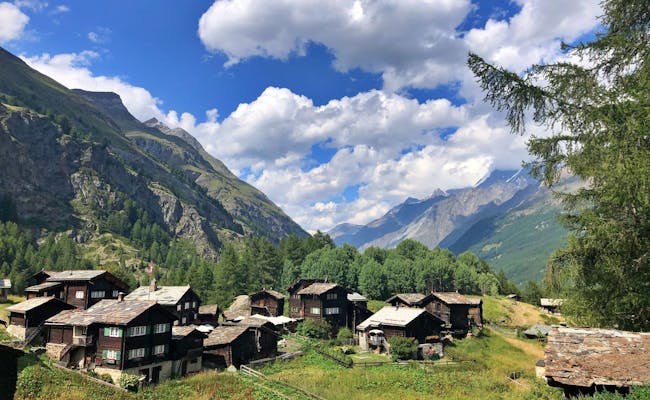

Highlights on this itinerary
In the morning, explore Zurich on your own, borrow a free bike with «Züri rollt» or join a guided city tour. After the tour, go to a restaurant for a cheap lunch-deal (cheap by Swiss standards) or grab some take-away lunch to have in your favourite spot in the city.
Two great places to enjoy a take-away lunch are on the wall at Lindenhof or one of the benches by Lake Zurich at Bellevue. Whichever spot you pick, move on to Richterswil afterward.
In tourist terms, you could say this place is off the beaten track. Not many visitors find their way down the west coast of Lake Zurich and if you’d like to escape the crowds, you might like hanging out in Richterswil for a bit.
If you’re happy to stick around for a few hours, we recommend you check in at your accommodation in Richterswil and spend the afternoon enjoying some time by the lake. However, you might not have come here to just sit around. In this case, you have a few nearby destinations to choose from.
Our two favourite places in the area are the charming little town of Rapperswil or Walenstadt at Lake Walensee, a stunning lake that sometimes looks like a Scottish Loch.
Whatever you end up doing, spend the evening enjoying the shores of Lake Zurich in Richterswil.

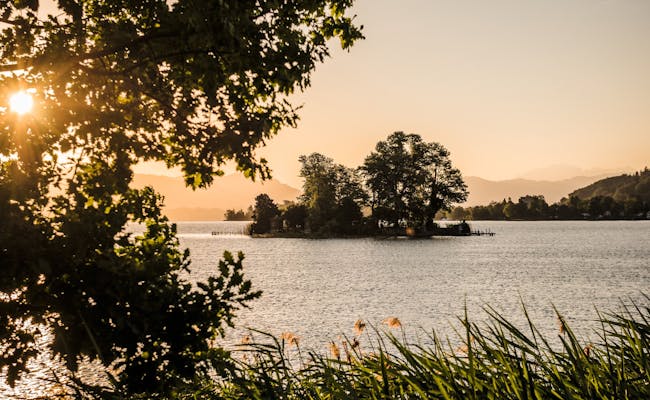
After breakfast, take the train to Glarus. This village is surrounded by high mountains, making the area a fantastic hiking destination. Not far from Glarus is the Geopark Sardona, a UNESCO World Heritage site. This park is open to the public and offers hiking trails of all difficulty levels.
One of the most popular destinations for many visitors is the Tschinglen expedition. This trip includes a gondola ride, a 1.5-hour hike, and excellent photo opportunities.
Once you're done hiking, you can stock up on chocolate in the village of Bilten. The chocolate from Läderach is, in many ways, more exquisite than that of other players in the Swiss chocolate scene.
This family business is especially known for its handmade broken chocolate. They spice it up with various interesting ingredients like candied oranges, caramelized almonds, roasted hazelnuts, and more.
In their museum in Bilten, you'll embark on a journey through the chocolate-making process, including tastings and demonstrations. Depending on when you finish your chocolate tour, you might still have enough time to check out Lake Walen. Afterward, you'll return to Richterswil for a second night.
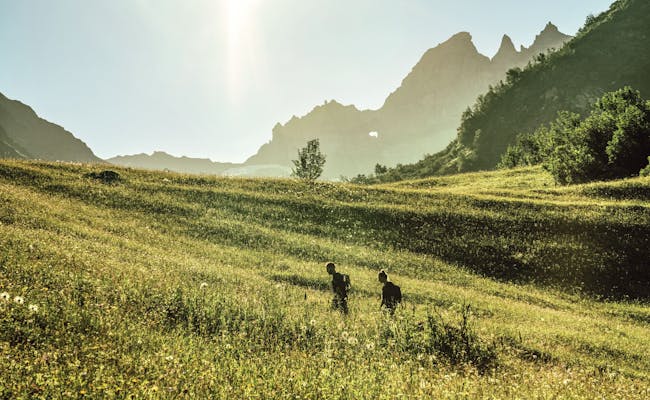
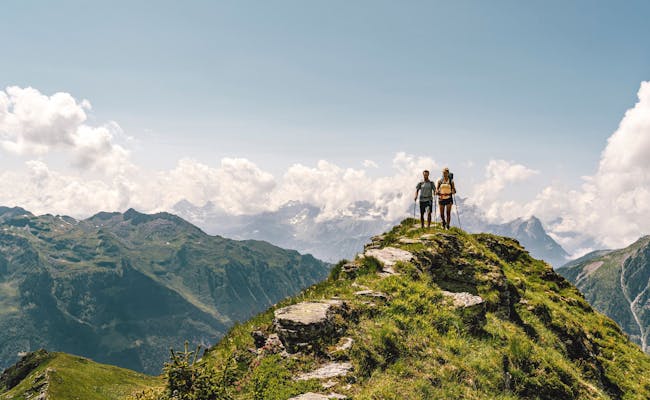
Today it's time to visit the lake. After breakfast, you'll head to the village of Brunnen on Lake Lucerne. To get there, you'll need to change trains twice. But the whole journey takes just about an hour and a half, and the transfers are quite straightforward.
Check the SBB timetable to find your connection. There are different ways to travel from Richterswil to Brunnen. Depending on how much luggage you're bringing, you can choose a route with more time for transfers.
When you arrive in Brunnen, you’ll take the passenger ship to Lucerne. This beautiful trip takes about two hours and runs year-round. However, the schedule changes throughout the year, so make sure to check the current timetable to plan your journey.
If you leave Richterswil early in the morning, you should arrive in Lucerne by the afternoon. Plenty of time to explore this popular and interesting city. Stroll across the Chapel Bridge, meander through the old town, linger by the lake, or visit the Glacier Garden with its famous Lion Monument.
For more inspiration on things to do in and around Lucerne, check out Day 3 in Route No. 2.
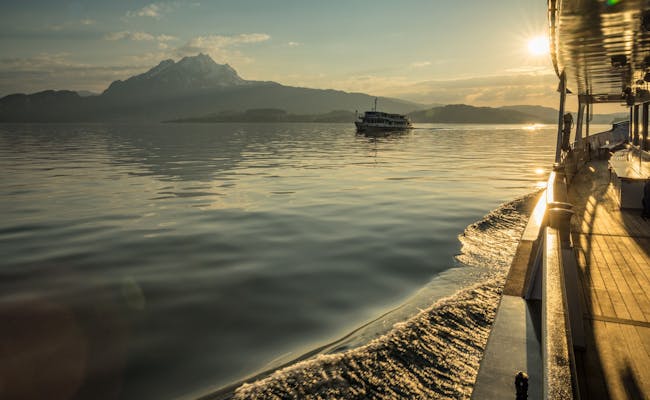
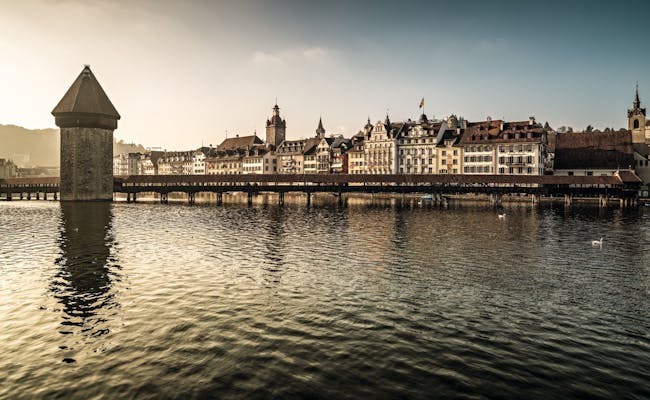
Today, you’ve got plenty more time to make the most of your stay in the Lucerne area. Again, you’ll find about two days’ worth of things to do on day 3 in itinerary No. 2.
If the weather is good, we highly recommend you spend the day outside or up in the mountains. In case you'd rather stay close, we suggest checking out Mount Pilatus or going for a hike at Bürgenstock.
Whatever you end up doing, head back to Zurich whenever you’re ready and spend the rest of the day exploring Switzerland’s largest city.

Highlights on this itinerary
Explore Zürich in the morning at your own pace, rent a free bike with "Züri rollt" or join a city tour. After the tour, you can grab a take-away lunch and enjoy it on the train to Zermatt.
If you're not in a hurry to get to Zermatt, you can take a short break in Bern, Spiez, or Thun. These cities are all on the route from Zürich to Zermatt and offer plenty of sights and activities.
Between Visp and Zermatt, you'll travel a leg of the journey on the Glacier Express. This ride is especially scenic, so keep your camera ready.
Once you arrive in Zermatt, you can spend the rest of the day strolling through the famous resort and taking in views of the majestic Matterhorn, provided it's not shrouded in clouds.


Zermatt is all about the mountains and nature. If you came to Switzerland for the breathtaking views of the mountains, you’re going to love it here.
There are numerous hikes and walks of all difficulty levels that will take you to places you never even knew existed. For example, the popular Zermatter 5-Lake Trail, which takes about 2.5 hours to complete. It leads you past five crystal-clear mountain lakes and offers stunning views of the Matterhorn along the way.
Another adventure that might make you a bit dizzy is crossing the longest pedestrian suspension bridge in the world, located in Randa. It's a long 494 m and stretches over the valley. The round trip to the bridge starts and ends in Randa, just a 15-minute train ride from Zermatt.
If you prefer to skip the hike and want an easier way to see the mountains, we recommend taking a ride up to the Gornergrat. After an incredibly steep train journey, you’ll find yourself at an elevation of 3,089 m above sea level, right in front of the Gorner Glacier and the Matterhorn. Don’t be surprised if you’re completely out of breath when climbing the stairs to the viewpoint—it's not you, it's the thin air.
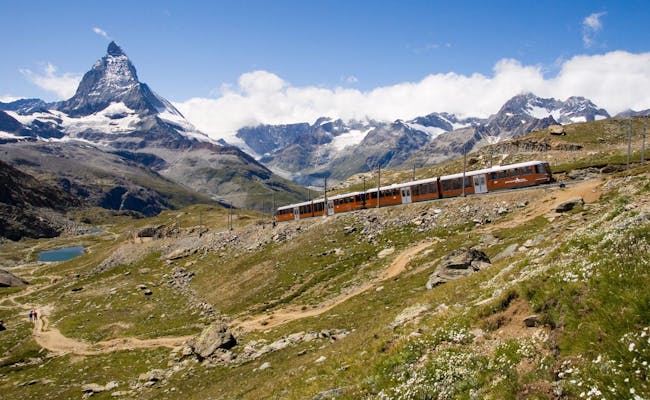
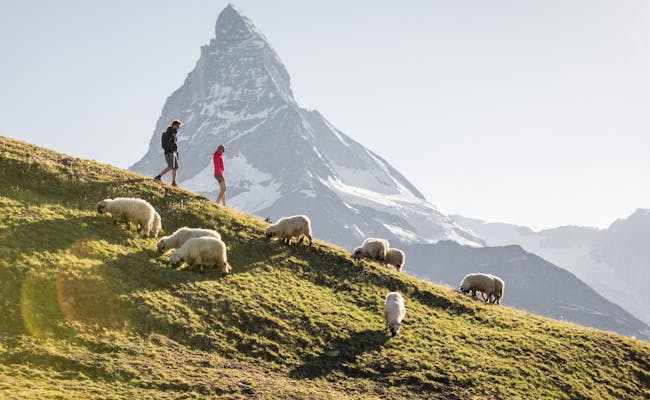
In Zermatt gibt's definitiv mehr als genug zu entdecken, um einen ganzen Tag zu füllen. Heute ist die ideale Gelegenheit, alles nachzuholen, was dir gestern entgangen ist.
Wusstest du, dass Zermatt auch im Winter ein beliebtes Skigebiet ist? Wenn du auf der Suche nach Pisten bist, wirst du hier sicher fündig.
Sobald du bereit bist, die Alpenluft hinter dir zu lassen, steigst du in den Zug nach Montreux am Genfersee. Verbringe den Rest des Tages mit einem Spaziergang an der Promenade von Montreux und schau dir die Freddie Mercury-Statue vor der Markthalle an.
Wenn du das berühmte Schloss Chillon besuchen möchtest, kannst du der Promenade bis zum Schloss folgen oder dir einfach einen Bus nehmen. Es fahren auch regelmäßig Passagierschiffe zwischen Montreux und Schloss Chillon.
Alternativ kannst du auch in die andere Richtung zu den Lavaux-Weinbergen fahren. Nur eine kurze Zugfahrt westlich von Montreux findest du die berühmten Lavaux-Weinberge, die zum UNESCO-Weltkulturerbe gehören. Um die herrliche Aussicht zu genießen, steig in Cully oder Epesses aus und folge dem ausgeschilderten Wanderweg durch die Weinberge.
Wir wissen, dass das heute ein ziemlich volles Programm ist. Wir empfehlen nicht, alles auf einmal abzuklappern. Aber jetzt, wo du die Möglichkeiten kennst, bist du flexibel und kannst deinen Tag nach Belieben gestalten.
Und vielleicht passend zum Wetter…
Today is all about cheese and chocolate, since Switzerland is famous for both. So, hop on a train to Gruyères and get ready for a feast in a medieval town.
The Gruyère cheese factory is located just behind the train station. Here, you can watch how traditional Gruyère cheese is made. Tastings are, of course, included. Once you're done snacking, you can either take the bus or follow the path to the center of Gruyères. This walk takes about 20 minutes.
The main attraction in Gruyères is probably the castle, which is open to the public and charges 12 CHF for entrance. However, the charming cobblestone streets and the numerous souvenir shops might tempt you to linger longer than you expected.
After exploring Gruyères and perhaps picking up a souvenir or two, you can head to Broc and visit La Maison Cailler. At their visitor center, you'll learn everything you need to know about Switzerland's oldest chocolate brand. At the end of the tour, a buffet awaits where you can indulge in all the chocolate you can handle.
On the train ride back to Montreux and onwards to Geneva, you can try to digest your cheese and chocolate overload. Spend the rest of the day exploring Geneva, Switzerland's second-largest city.
You also have the option to swap your cheese and chocolate binge for a glacier visit. Instead of going to Gruyères, you can take the train to Col-du-Pillon and check out Glacier 3000.
The 360-degree view is breathtaking. And if you're feeling adventurous, the Peak Walk across the suspension bridge is an experience you won't forget any time soon.
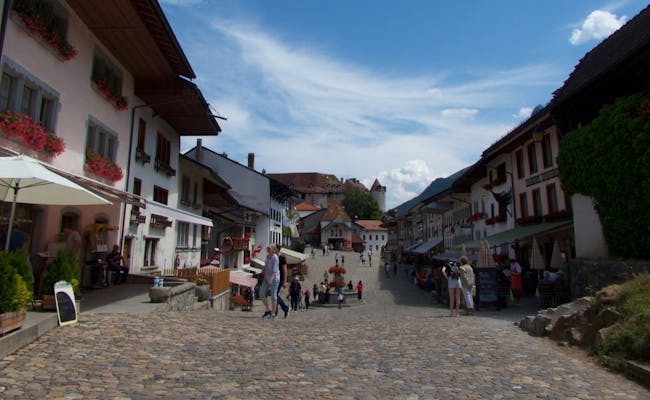
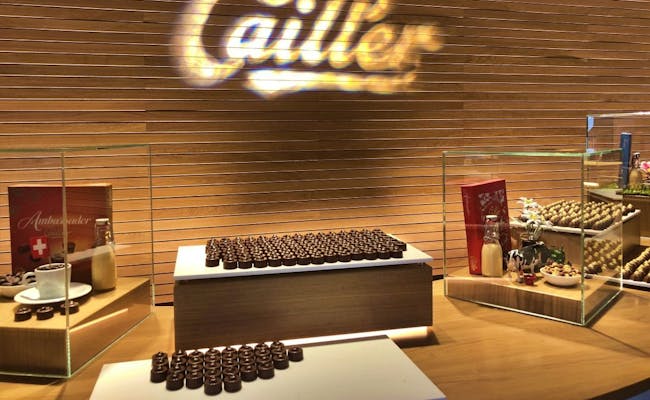
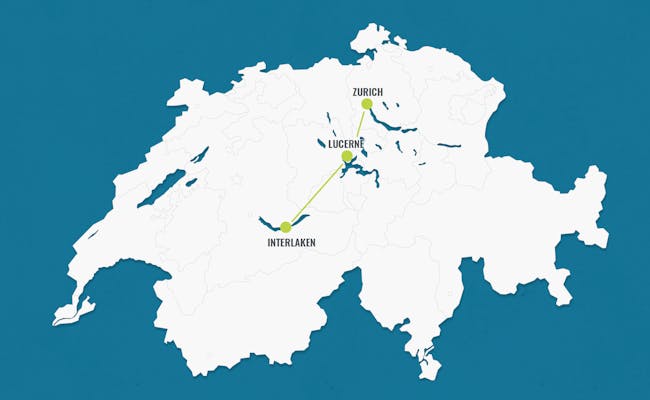
Highlights on this itinerary
Start your day early in Zürich and head to Thun. This picturesque town, surrounded by the Bernese Alps, is worth a stop on your way to Interlaken. Stroll through the old town, visit Thun Castle, and spend some time by the shores of Lake Thun.
To get to Interlaken, you can either take the train or board a passenger boat. The train ride takes just over half an hour, while the boat trip will take you more than two hours. If you have enough time, we definitely recommend the boat ride. The scenery is stunning, and it's well worth it.
Once you arrive in Interlaken, you can enjoy the evening in this popular resort. There are endless activities available, and it's great that you'll have all day tomorrow to fully enjoy this region.
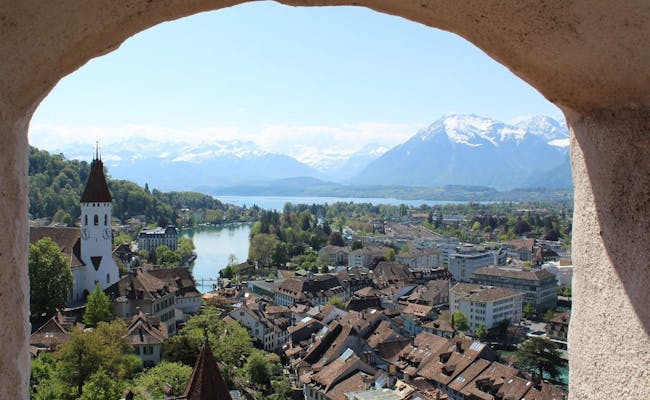
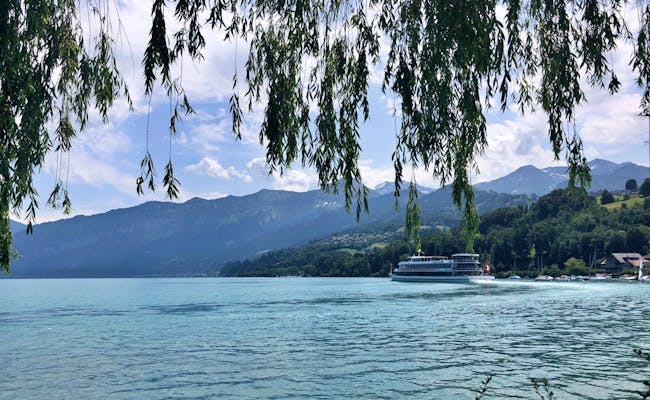
Today, you have more activities to choose from than you can imagine. It all depends on your budget, but in an adrenaline-fueled place like Interlaken, the sky's the limit.
If at all!
Skydiving, paragliding, canyoning, and jet boating are popular activities that will get your adrenaline pumping.
A slightly more relaxing option is a boat trip on Lake Thun or Lake Brienz. On both lakes, you'll be treated to incredible views, and you'll wish you never had to leave. If you want to stop off during one of the boat trips, you can get off in Giessbach (Lake Brienz), at the St. Beatus Caves, or in Spiez (Lake Thun).
The Jungfrau region around Interlaken is also an excellent spot for hikers. The number of hiking trails is practically endless. Regardless of your fitness level and ambitions, you'll find something that suits your taste here.
Of course, the famous Jungfraujoch—also known as the Top of Europe—is the number one destination that everyone wants to see. With the Jungfrau Railway, you'll ride up to the highest railway station in Europe and find yourself amidst the breathtaking mountain and glacier scenery.
If you're looking for a more budget-friendly alternative to the Jungfraujoch, we recommend visiting the Schilthorn, Schynige Platte, Grindelwald First, or Männlichen instead. The trips to these mountains and the views from the summit won't disappoint you.
Other attractions in and around Interlaken include: the Ballenberg Open-Air Museum, the chocolate workshop at Funky Chocolate Club, the two mountain lakes Blausee or Oeschinensee, or the Aare Gorge. And let’s not forget the charming towns and villages like Brienz, Spiez, Thun, Lauterbrunnen, or Grindelwald.
We could go on and on here. But you’d probably just be annoyed that you’re not spending the whole week here.
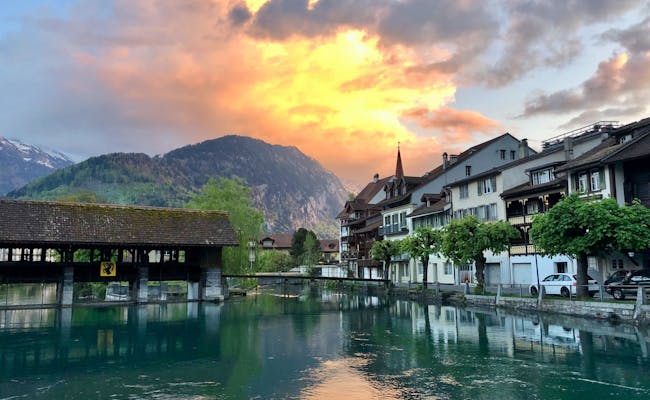

We’re assuming you didn’t get to do everything you set your mind to yesterday. This is why you have almost another full day to knock yourself out in and around Interlaken today. Do what you need to do before heading to Lucerne on the Golden Pass Line.
The Golden Pass Line is a popular scenic train route from Lucerne to Montreux and is served by several train companies. It connects the centre of Switzerland with the shores of Lake Geneva.
This panoramic journey leads past eight lakes, rides through six different cantons (the Swiss version of states), crosses three mountain passes and connects two language regions. Today’s leg between Interlaken and Lucerne is run by Zentralbahn and takes just under two hours.
Spend the rest of the evening exploring Lucerne. Walk across the Kapellbrücke, take a stroll through the old town, hang out by the lake or visit the Glacier Garden with its famous Lion Monument.
Hop on the train to Arth Goldau in the morning. From there, the Rigi Bahn - the first mountain railway in Europe - takes you to the summit of Rigi Kulm in a scenic 45-minute ride.
If the Rigi isn't shrouded in clouds, you'll get a breathtaking view of the Alps, Lake Lucerne, and surrounding lakes. Just follow the signs to the viewpoint after you get off at Rigi Kulm.
Once you've taken enough photos, you can either take a break in the restaurant, ride the train down to Vitznau, or go hiking. With over 120 kilometers of hiking trails, you'll have plenty of options.
When you arrive in Vitznau, the passenger ship to Lucerne will be waiting for you. Keep your camera ready, as the boat ride is incredibly picturesque, offering even more stunning views.
Back in Lucerne, grab your luggage, head to Zurich, and spend the rest of the day exploring Switzerland's largest city. Since you didn't have time on your first day, you can now rent a free bike from "Züri rollt" or set off on your own adventure.
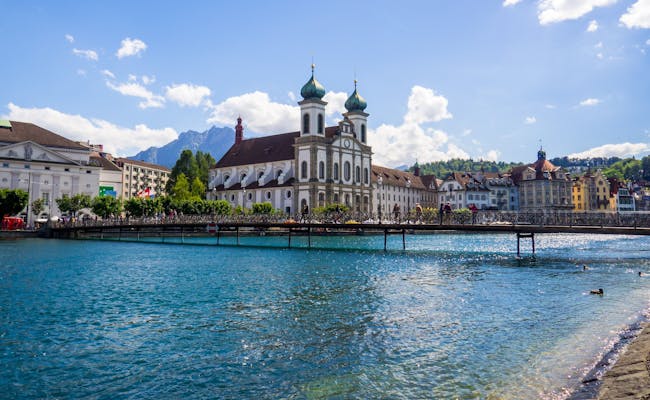
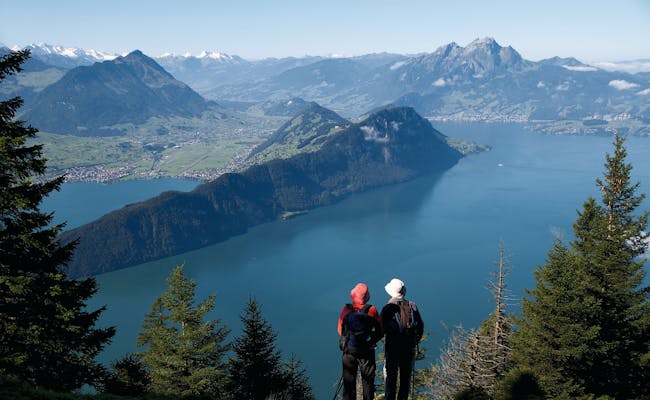
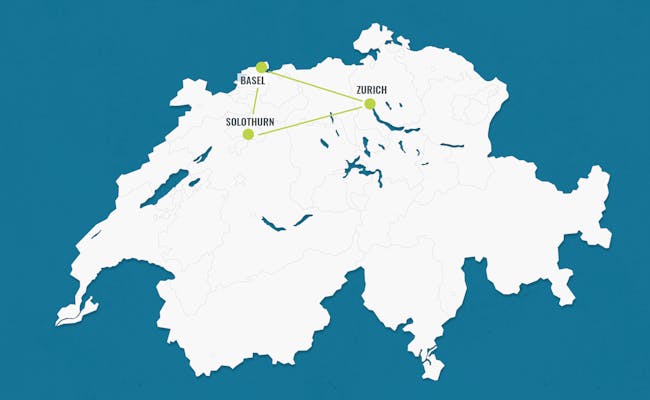
Highlights on this itinerary
Explore Zürich on your own in the morning—rent a free bike with "Züri rollt" or join a city tour. After your tour, grab some takeout for lunch and enjoy it by the shores of Lake Zurich or on Lindenhof.
But don't fill up too much because you have a visit to the Home of Chocolate by Lindt ahead. If you've never tasted a roasted cocoa bean, devoured as many Lindor balls as you can, or spent time with the tallest chocolate fountain in the world, now's your chance.
After indulging in chocolate, take the train to Solothurn. This city is known as "the prettiest Baroque town in Switzerland."
Treat yourself to some ice cream in the Vitaminstation, one of the best ice cream parlors around. To act like a local, you can sit on the stone wall by the Aare, the “Aaremüürli,” while enjoying your ice cream.
Seraina's Tip: My two absolute favorite places in Solothurn are Pittaria and Vitaminstation. Anyone who loves a good falafel or hummus will adore Pittaria. And Vitaminstation serves the best ice cream we've ever had in Switzerland, at incredibly fair prices for Swiss standards.
Although Solothurn is by no means a big city, there’s still plenty to see and do in the area. One activity we particularly recommend is going on a hike in the Jura mountains. This high plateau is a wonderful area to visit all year round.
One option to reach the top with its countless walking trails is by cable car from Oberdorf to Weissenstein. Feel free to walk as long and as far as you like before hiking back down or catching the cable car to Oberdorf.
A very popular hike is the round trip from Solothurn via Balmberg and Weissenstein. Catch the Postauto in Solothurn, get off at Balmberg, walk along the crest to Weissenstein and head back down to Oberdorf by cable car. From Oberdorf, the train will take you back to Solothurn.
This is an easy walk and takes you into the Jura without too much effort. During your hike, you’ll also enjoy the view over the Alps, including Eiger, Mönch and Jungfrau.
Another place you can visit is Verena Gorge. You can walk along the creek through the forest in the gorge until you reach the little hermitage at the end. The walk takes roughly 45 minutes return and is super peaceful.
Alternatively, hop on the passenger ship to Biel. How long you stay on it really depends on your preferences. You can go all the way to Biel – which takes around three hours – or get off anywhere along the way and catch the train back to Solothurn.
One of the highlights on this tour will be Switzerland’s largest stork station in Altreu, which you’ll pass about 45 minutes into the journey. In 1950, when storks were nearly extinct in Switzerland, Max Bloesch started his reintroduction project to save our storks. Thanks to him, around 40 breeding pairs can be seen soaring through the air, strutting across the fields and clattering on the rooftops around Altreu these days.
Only in spring and summer, though. They travel to warmer territories in autumn until winter is over.
If you continue your journey onward to Biel, the views of the Jura mountains and the Swiss Central Plateau will accompany you all the way. After passing through a watergate, you’ll arrive at the port in Biel, which is only a short walk from the train station.
From there, heading back to Solothurn will take 15 minutes by train.

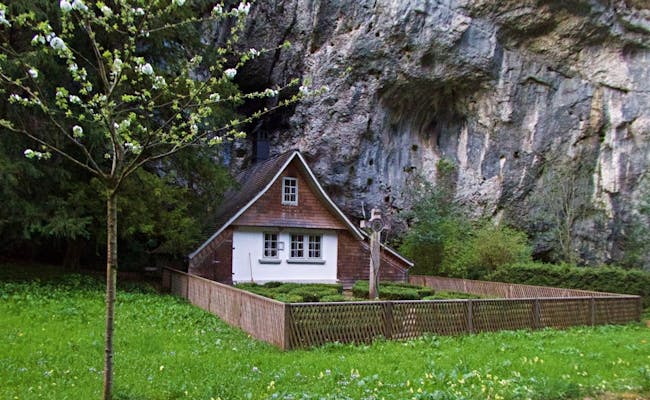
If you need a bit more time in Solothurn this morning, feel free to stick around. When you're ready, hop on the train and head to Basel. The train ride takes just an hour.
Basel is a vibrant city right at the German-French border. You'll find several city tours available at different times. You can either join a tour or explore the city on your own.
Stop by the Pfalz - the perfect viewpoint for some postcard-worthy photos - stroll along the Rhine and watch the large cargo ships coming in and out of the harbor. Walk past the Cathedral or check out one of the many museums.
During the warmer summer months, you can join the locals for a swim in the Rhine. Before they jump in and float downstream, they pack their clothes in a Wickelfisch. This dry sack is shaped like a fish and has become a symbol of Basel.
If there’s something you didn’t get to do in Basel yesterday, today’s your day. But in case you’ve seen enough of the city already, you can always hop across the border and visit Weil am Rhein in Germany or St. Louis in France.
Technically, you could even visit three countries in one day. Switzerland, Germany and France. That’s completely doable in Basel and might be something you don’t get to experience every day. Especially if you’re from a country that requires you to get on a plane to cross the nearest border within a reasonable amount of time.
Whenever you’re ready to leave Basel, head back to Zurich and spend the rest of the day exploring Switzerland’s largest city.


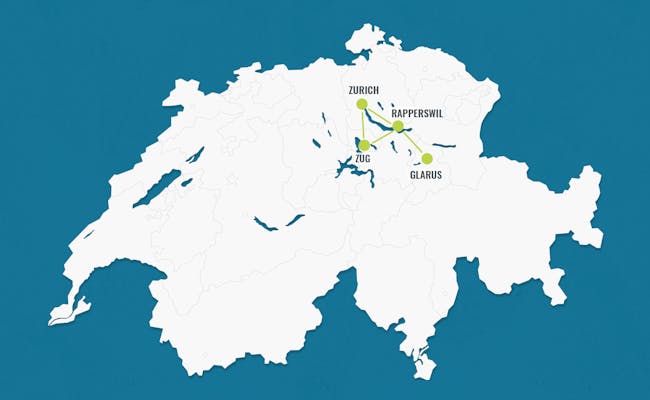
Highlights on this itinerary
Explore Zürich in the morning at your own pace, rent a free bike from "Züri rollt" or join a city tour. After the tour, you can grab a take-away lunch and take the passenger boat to Rapperswil.
Spend the rest of the afternoon wandering around Rapperswil. The town is a hidden gem at the southern end of Lake Zürich. Visit the castle, spend some time with the deer in the castle garden, go for a swim in the lake, and stroll along the picturesque waterfront promenade.
A great place to relax is the meadow behind the OST, the University of Applied Sciences in Rapperswil. You can't miss it when you walk towards the lake from the train station.
If you're up for a light afternoon walk, follow the wooden walkway and the bridge across the lake to Pfäffikon. This will take you along three kilometers of the Camino de Santiago, a pilgrimage route leading from various places in Europe to Santiago de Compostela in Spain. If you get hungry, treat yourself to a pizza or an ice cream at Pizzeria Dieci in Rapperswil.

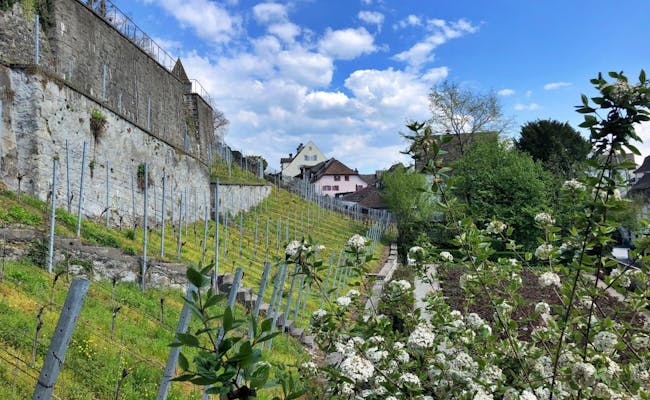
After breakfast, take the train to Glarus. This village is surrounded by tall mountains, making the area a fantastic hiking destination. Not far from Glarus lies the Sardona Geopark, a UNESCO World Heritage site. This park is open to the public and offers hiking trails of all difficulty levels.
One of the most popular spots for visitors is the Tschinglen Expedition. This trip includes a gondola ride, a 1.5-hour hike, and excellent photo opportunities.
Once you're done hiking, you can stock up on chocolate in the village of Bilten. Läderach chocolate is, in many ways, more exquisite than that of other players in the Swiss chocolate scene.
This family-owned business is especially known for its handmade broken chocolate. They flavor it with an array of interesting ingredients, such as candied oranges, caramelized almonds, roasted hazelnuts, and more.
In their museum in Bilten, you'll embark on a journey through the chocolate-making process, complete with tastings and demonstrations. Depending on when you wrap up your chocolate tour, you might still have time to stop by Lake Walen. After that, you’ll return to Rapperswil for a second night.


Leave Rapperswil in the morning and head to Einsiedeln. This town is famous for its impressive abbey and is another important milestone on the Camino de Santiago. Every year, it's visited by almost a million pilgrims on their way to various other pilgrimage sites across Europe.
But Einsiedeln has more to offer than just the abbey. You can stroll around Einsiedeln and also check out the cheese dairy, where you can watch the cheese makers at work. And of course, you can enjoy some delicious Swiss cheese while you’re there.
If you're looking for an alternative to visiting the abbey or the cheese dairy in Einsiedeln, consider heading to Glarus. This town, surrounded by mountains, offers plenty of hiking opportunities.
Another alternative to Einsiedeln is the Walensee region. The Walensee is a beautiful lake that can resemble a Scottish loch depending on the weather and light reflections.
Once you’re ready, continue on to Zug. This is the second hidden gem on this route. To get there, you’ll need to change trains twice. The entire journey takes about an hour, and the connections are well coordinated.
Zug is a charming little town by the shores of Lake Zug. Here, you'll find plenty of cafés, stunning views of the lake, and hidden alleys to keep you entertained for an afternoon.
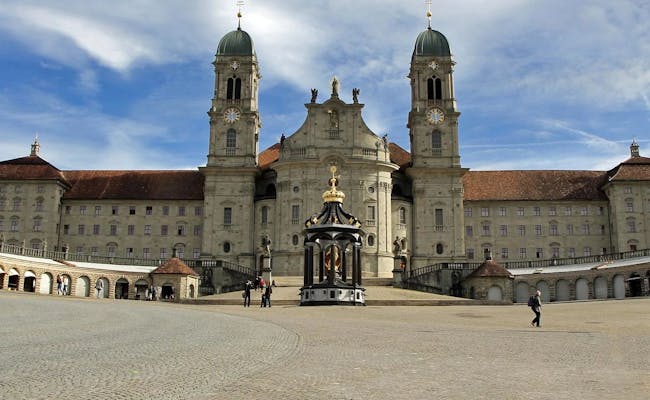

Before heading back to Zurich, you’ve got plenty of other activities to choose from. Zug is a great starting point for a variety of day trips. If the weather's nice, we recommend spending the day either in the mountains or by one of the nearby lakes.
The Rigi is not far from Zug and makes for a fantastic day trip. Alternatively, you can take a stroll at Sattel-Hochstuckli and enjoy the amazing mountain views. And let’s not forget the Zugerberg, the local mountain of the city.
When it comes to lakes, you’ve also got several options. Lake Ägeri, Lake Zug, Lake Lucerne, and Lake Zurich are all easily reachable.
If the weather keeps you from being outside, you can take a trip to Lucerne or visit the Aeschbach chocolate factory in Root. Both destinations are just 20 to 30 minutes away by train from Zug.
Another option for rainy weather is the Swiss Museum of Transport in Lucerne. As the name suggests, this museum is all about transport. From bicycles to astronautics, it has it all.
In Hergiswil, not far from Lucerne, you can find what the Swiss lovingly call the "Glasi." The Hergiswil Glassworks will guide you through the process of glass-making, let you watch the professionals at work, and even give you the chance to try your hand at glassblowing. When was the last time you made your own glass?
At the end of the day, you’ll take the train back to Zurich.
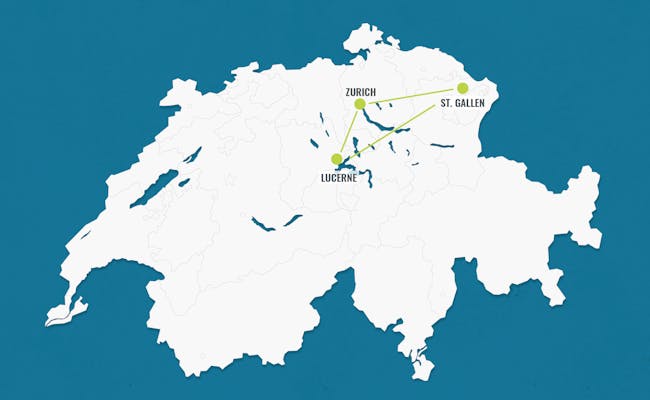
Highlights on this itinerary
Leave Zurich first thing in the morning and catch the train to Lucerne. Store your luggage either at the train station or at your accommodation and head out exploring the area.
For an extensive list of things to do in and around Lucerne, turn back to itinerary No. 3 on day 2. Once you’re back in Lucerne, spend the rest of the evening exploring the city or find a cosy spot by the lake to relax.
After breakfast, leave Lucerne and hop on the Voralpen Express to St. Gallen. The Voralpen Express travels through incredibly scenic landscapes and takes just over two hours to reach St. Gallen.
Among the many picturesque train rides in Switzerland, this one is definitely less touristy. There are no large panoramic windows and no friendly voice telling you which viaduct you're crossing.
But that doesn't make the journey any less worthwhile.
We recommend taking a break halfway and getting off in Rapperswil. This town is a hidden gem located at the lower end of Lake Zurich. Visit the castle, spend some time with the deer in the castle gardens, take a swim in Lake Zurich, and stroll along the idyllic lakeside promenade.
A great spot to relax is the meadow behind the OST, the University of Applied Sciences in Rapperswil. You can't miss it if you walk from the train station towards the lake.
If you want a leisurely walk, follow the wooden path and the connecting bridge over the lake to Pfäffikon. During this walk, you'll cover three kilometers of the Camino de Santiago, a pilgrimage route leading from various places in Europe to Santiago de Compostela in Spain.
When you're ready to continue, catch the next train to Lucerne and spend the afternoon exploring the city. With the UNESCO-protected Abbey District, its towering cathedral, and the impressive Abbey Library, St. Gallen has plenty to offer in terms of sights.
Don’t miss the recreation area “Drei Weieren.” You can reach it either via the Mühleggbahn or on foot using one of the many staircases. Alternatively, you can also visit the Peter & Paul Wildlife Park or quench your cultural thirst at one of the many museums.
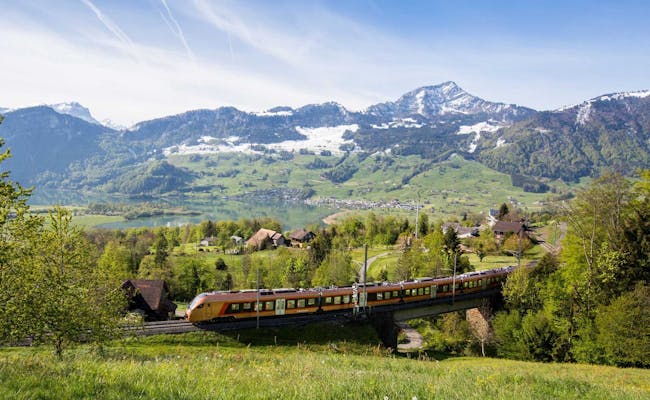

Today, you’re in for some serious hiking and a ton of impressive mountain views. In the morning, catch the train to Wasserauen and hike up to Seealpsee, one of the three lakes in the Alpstein mountain range. Spend some time in this peaceful spot before moving on to Ebenalp.
On your way to Ebenalp, you’ll pass by a place you might have seen before. The famous Äscher restaurant. Ever since it was featured on National Geographic and on Ashton Kutcher’s Instagram, it‘s been completely overrun by its success. This sadly caused it to lose some of its former charm. However, it’s still a worthwhile place to snap a few photos and take a break.
At Ebenalp, you can choose between hiking back to Wasserauen or catching the cable car. If you still have it in you after this long day, you might like a quick stopover in Appenzell on your way to St. Gallen.
In case you hop off in Appenzell and are feeling brave, visit the little cheese store at Hauptgasse 13. But be warned, those smelly cheese fumes will knock your socks off the second you enter the store. There’s no way your feet will be able to compete with that odour. Not even after a full day of being trapped inside your trekking boots... 🙂
Oh, and don’t miss out on a piece of Appenzeller Biber, an iconic local sweet treat made of gingerbread and a honey almond filling. And before you ask: Nope. This Biber doesn’t have any famous Canadian relatives...
Also, if you’re a beer-lover, make sure to stop by the Locher brewery. They brew the popular Quöllfrisch beer that is consumed all across Switzerland.
In the evening, head back to St. Gallen and enjoy sleeping like a baby tonight. Fresh mountain air has a tendency to leave you peacefully exhausted.
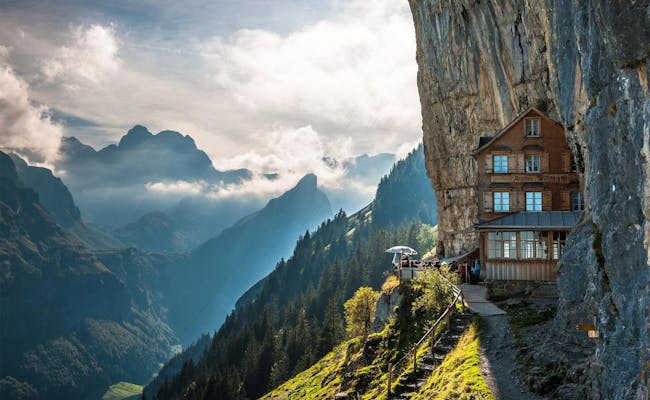
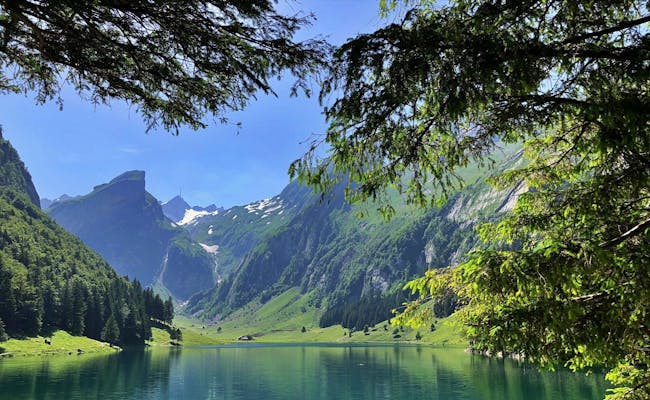
Spend some time in St. Gallen after breakfast and then head to the shores of Lake Constance. This lake is 63 km long and up to 14 km wide, straddling Germany, Austria, and Switzerland. It's one of the largest lakes in Europe and can be easily reached by train from St. Gallen.
In this tri-national area, there's a wide range of attractions and activities to discover. For instance, there's the picturesque city of Constance in Germany, just a short walk from Kreuzlingen. Many Swiss people go there for affordable shopping. But Constance has much more to offer than just big shopping options.
With its charming old town, plenty of cafés, restaurants, ice cream parlors, and peaceful spots by the lake, Constance attracts many visitors during the warmer months. If you're interested in fish and other underwater creatures, Sea Life is always a good option when the weather isn't great.
Of course, you don't have to leave the country to fully enjoy Lake Constance. Visit one of the many beaches, go swimming, take a boat trip, rent a stand-up paddleboard, grab a bike and follow the bike paths, or take a walk along the lakeshore.
The canton of Thurgau, which makes up most of the Swiss part of Lake Constance, is famous for its apple trees. One of the hikes we recommend in this area is the Altnauer Apple Path. It's especially idyllic when the trees are blooming in April and May or during the harvest season in autumn. The path is divided into three separate trails, each with informative signs on different topics. If you combine all three trails, you'll learn everything there is to know about apples. Plus, there are plenty of opportunities along the way to buy and taste various apple products.
Other interesting places around Lake Constance include the cities of Romanshorn, Rorschach, and Kreuzlingen. Once you've explored the area, take the train to Zurich and spend the remaining time in Switzerland's largest city.
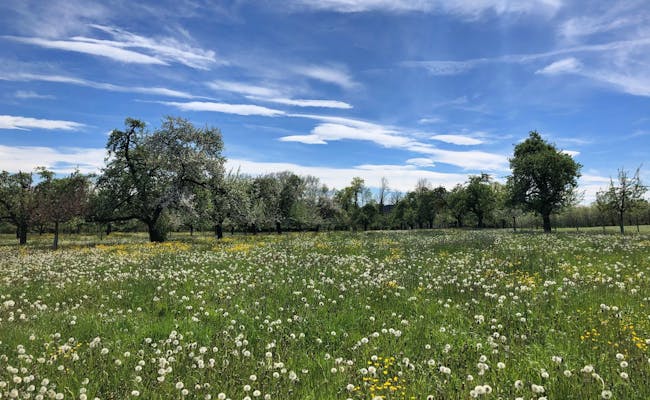

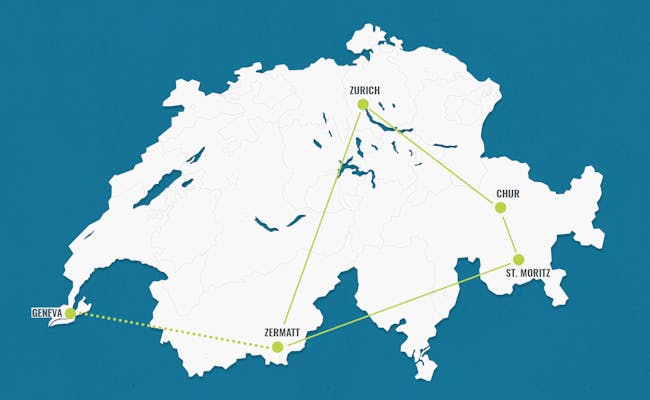
Highlights on this itinerary
Explore Zürich on your own in the morning, rent a free bike with "Züri rollt" or join a city tour. After the tour, grab a takeaway lunch and enjoy it on the train to Chur.
To get a better view of Lake Zürich and Lake Walensee on the way to Chur, make sure to sit on the left side of the train.
Spend an hour or two strolling through Chur and get ready for the fresh mountain air waiting for you in St. Moritz. To reach St. Moritz, hop on the direct RhB train in Chur. Keep your camera handy, as you will be showered with panoramic views throughout the journey. The Landwasser Viaduct and the winding Albulaline are two highlights on this route.
Spend the rest of the day in St. Moritz. If you're feeling unusually drowsy this evening, it’s due to the altitude of 1822 m above sea level. Usually, it takes a day or two to acclimatize to the thinner air.
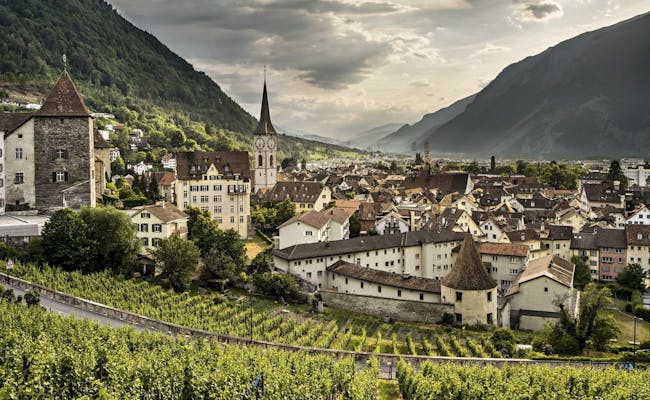

Today, you’ll be riding the Glacier Express from St. Moritz to Zermatt. Traveling on the "slowest fast train in the world" is a unique experience. Throughout the journey, you’ll be treated to some of the best views the Alps have to offer.
The train departs from St. Moritz twice daily in the morning. The timetable changes throughout the year, and there are some trains that do not cover the entire route between St. Moritz and Zermatt. To find your connection, make sure to check the current timetable in advance.
There’s a reason the Glacier Express is one of the most popular train routes in Switzerland. What makes this trip unforgettable are the fantastic views that accompany you the entire way. The train takes you over 291 bridges, through 91 tunnels, across three cantons, and through two language regions.
The journey takes just over 8 hours, and depending on when you leave St. Moritz, you’ll arrive in Zermatt between 5:00 PM and 6:00 PM. Once you arrive, you can spend the rest of the day wandering through the quaint little mountain town and enjoying the view of the majestic Matterhorn.
Assuming it's not shrouded in clouds.


In Zermatt, the mountain scenery and nature take center stage. If you came to Switzerland for the stunning views of the mountains, you're going to love it here.
There are numerous hikes and walks of all difficulty levels that will take you to places you didn’t even know existed. One popular route is the Zermatt Five Lakes Walk, which takes about 2.5 hours. It passes by five crystal-clear mountain lakes and offers breathtaking views of the Matterhorn throughout.
Another adventure that might make you a bit dizzy is crossing the longest pedestrian suspension bridge in the world in Randa. It's a whopping 494 m long and spans across the valley. The round trip to the bridge starts and ends in Randa, which is just a 15-minute train ride from Zermatt.
If you'd prefer to skip the hike altogether and see the mountains the easy way, we recommend taking the train up to Gornergrat. After an incredibly steep train ride, you'll find yourself at an elevation of 3,089 m above sea level, right in front of the Gorner Glacier and the Matterhorn. Don't be surprised if you find yourself completely out of breath while climbing the stairs to the viewpoint—it's not you, it's the thin air.


There’s certainly more than one day’s worth of things to do and see in Zermatt. Which means today is the perfect time to tick off anything you didn’t get round to yesterday.
Once you’re ready to leave the alpine air, catch the train back to Zurich. Or, if you’re flying out of Geneva or planning on visiting Switzerland’s second largest city, you can head in that direction instead.

Highlights on this itinerary
Explore Zürich in the morning at your own pace, rent a free bicycle with "Züri rollt" or join a city tour. After the tour, grab a take-away lunch and take the train to Chur.
Spend one to two hours wandering through Chur - the capital of the canton of Graubünden - and get ready for the fresh alpine air waiting for you in Davos. Before heading to Davos, be sure to visit two of the most beautiful Swiss mountain lakes. The Caumasee and Cresta Lake are not far from Chur. These two picturesque lakes are popular among both locals and visitors.
Another fantastic spot in the area is Ruinaulta, the stunning Rhine Gorge. This UNESCO World Heritage site is aptly nicknamed the "Swiss Grand Canyon." There’s a hike that connects the Rhine Gorge with Cauma and Cresta Lake. This easy 2.5-hour hike starts at the PostBus stop Flims Waldhaus. Depending on how much time you spent in Zürich and Chur today, you might be able to do the entire hike. If not, just pick one or two destinations before you take the train to Davos.

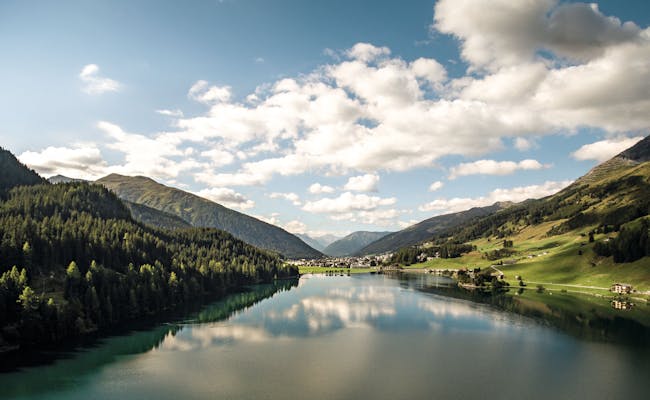
Davos is located at an altitude of 1,560 meters above sea level and is the highest city in the Swiss Alps. It's a popular spot for hikers, skiers, bikers, and outdoor enthusiasts in general. During the summer, three cable cars take you up into the mountains, where you'll find an extensive network of hiking trails. Together, these paths stretch for about 700 kilometers—plenty to keep you busy for a day.
If hiking isn’t your thing, there are plenty of other ways to spend your time in Davos. You could go mountain biking, paragliding, or take a stroll to Lake Davos. If you're visiting in winter, you’re in the right place. Davos offers skiing, snowshoeing, cross-country skiing, or just a nice walk in the snow.
You’ll have until late afternoon to enjoy Davos before heading to Scuol. The train ride takes just over an hour, and you’ll need to change trains in Landquart. You’ll notice that, even though Scuol is also in the canton of Graubünden, it feels quite different from Davos. Fortunately, you’ve got two days to explore the stunning Engadin region.
The Engadin is undoubtedly one of the most magical places in Switzerland. Especially in autumn, when the leaves turn yellow, orange, and red. But even throughout the rest of the year, it's a fantastic spot.
Your options for spending this free day in Scuol are similar to yesterday. Once again, it's all about outdoor activities, whether it’s summer or winter. So, pick a hiking trail that you like and spend the day exploring this stunning region.
Alternatively, you can head to one of the nearby villages. Two particularly lovely places we recommend are the villages of Sent and Guarda. Here, you’ll stroll past beautiful stone houses typical of the Engadin.
In Scuol, you can also visit the famous thermal baths, which attract visitors from all over Switzerland. Relax your muscles in the warm water and treat yourself to a few hours of unwinding.
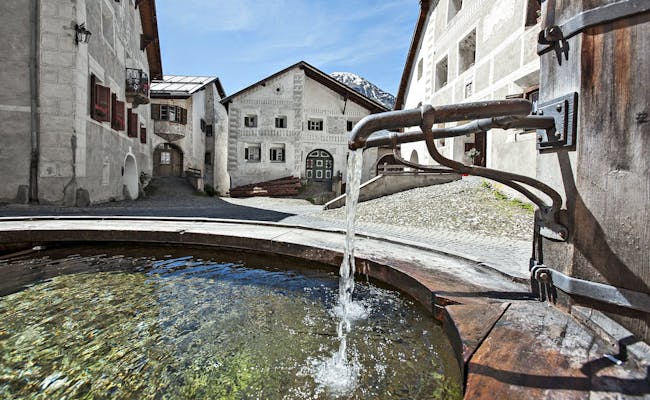

Guess what, you have another day to knock yourself out in and around Scuol today. So work on that list you’ve put together in your head. Another potentially interesting sight we haven’t mentioned yet is the castle of Tarasp.
This impressive construction near Scuol has been dominantly sitting on a steep hill since the 11th century. To see it from the inside, joining a tour is mandatory. If this is something you could see yourself doing before heading back to Zurich, check their current schedule to join a public tour.
The train ride from Scuol to Zurich takes almost three hours and unless you have a plane to catch, there’s no rush to get back.

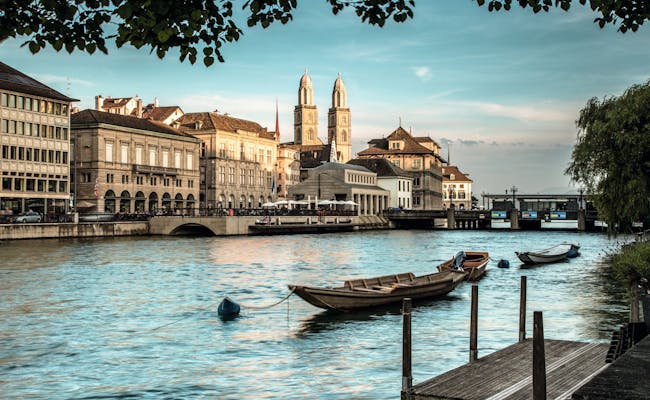
And this concludes our collection of four-day itineraries for Switzerland starting in Zurich. We hope you’ve been able to find the Switzerland itinerary to your taste. Have fun planning your trip.